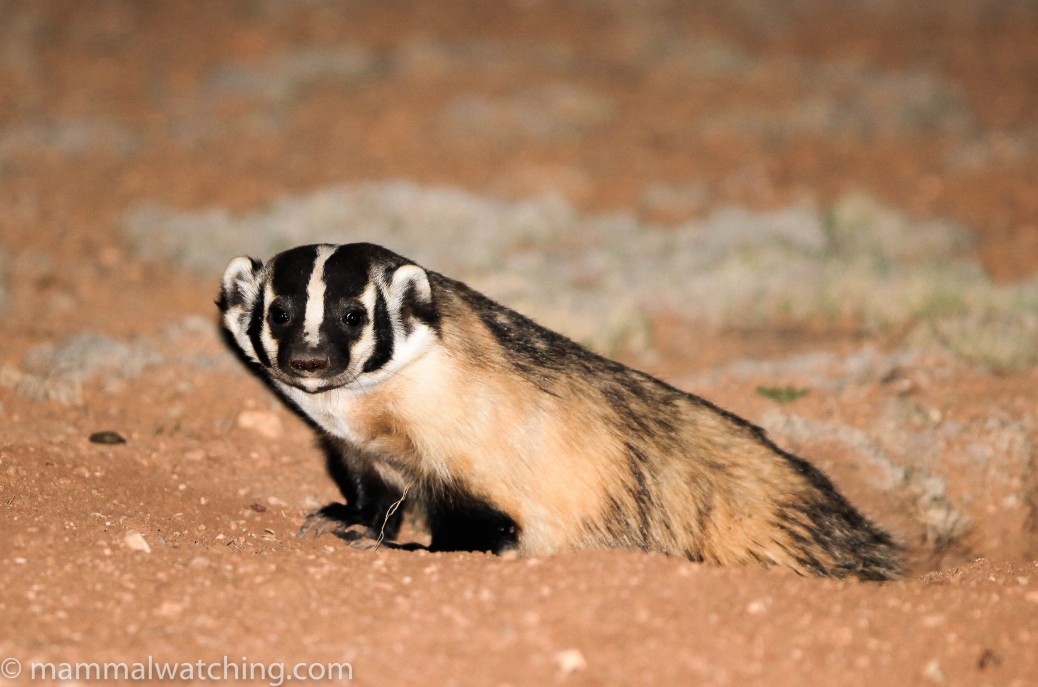
Arizona
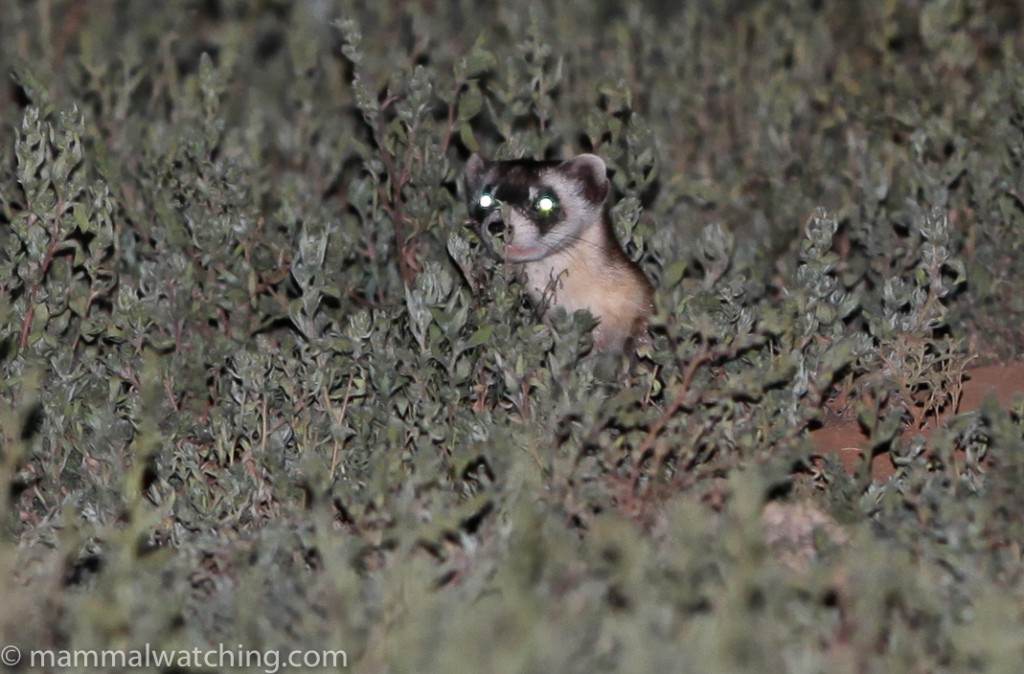
Black-footed Ferret, Mustela nigripes
I first visited Arizona for a few days in 1989, the highlight of which was a trek to the bottom of the Grand Canyon for an overnight stay and a battle with a Ringtail that was determined to separate me from my breakfast. I have returned many times since then including for a few days in September 1998, twice in 2010 , and again in 2012 (see my 2012 trip report) and 2013 (see my 2013 trip report). In 2018 I returned for a batting trip focussed on Spotted Bats and in 2022 spent a weekend chasing rodents not far from Flagstaff.
I have split the state into three regions: north, south east and south west of Phoenix.
Northern Arizona
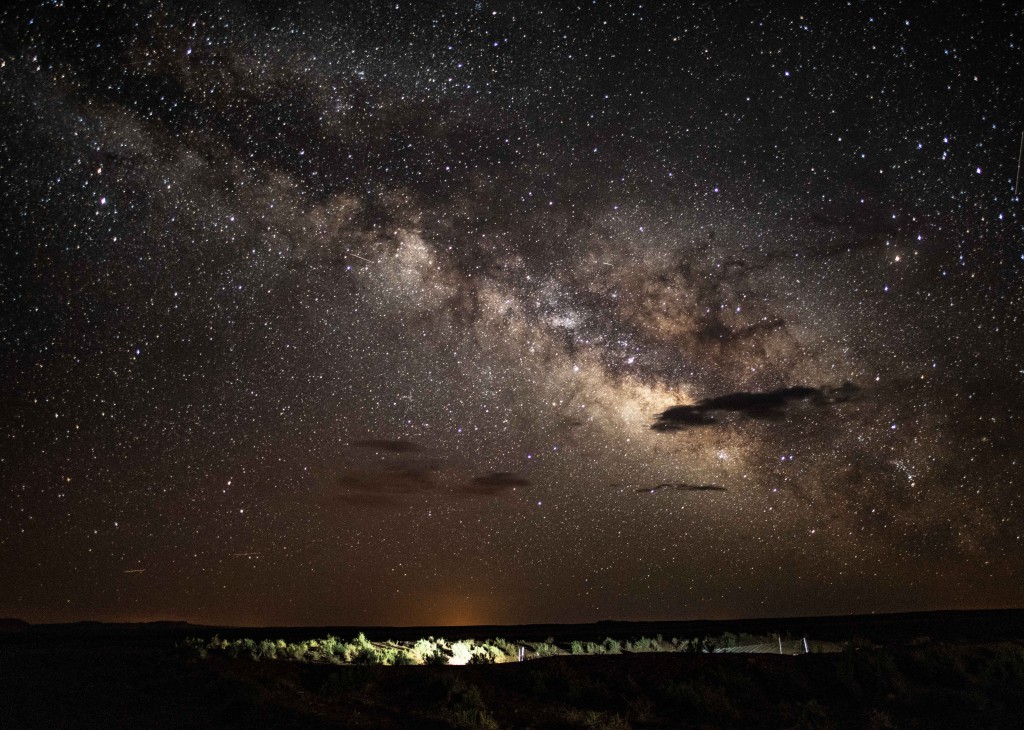
Milky Way. Photo Charles Hood
Flagstaff
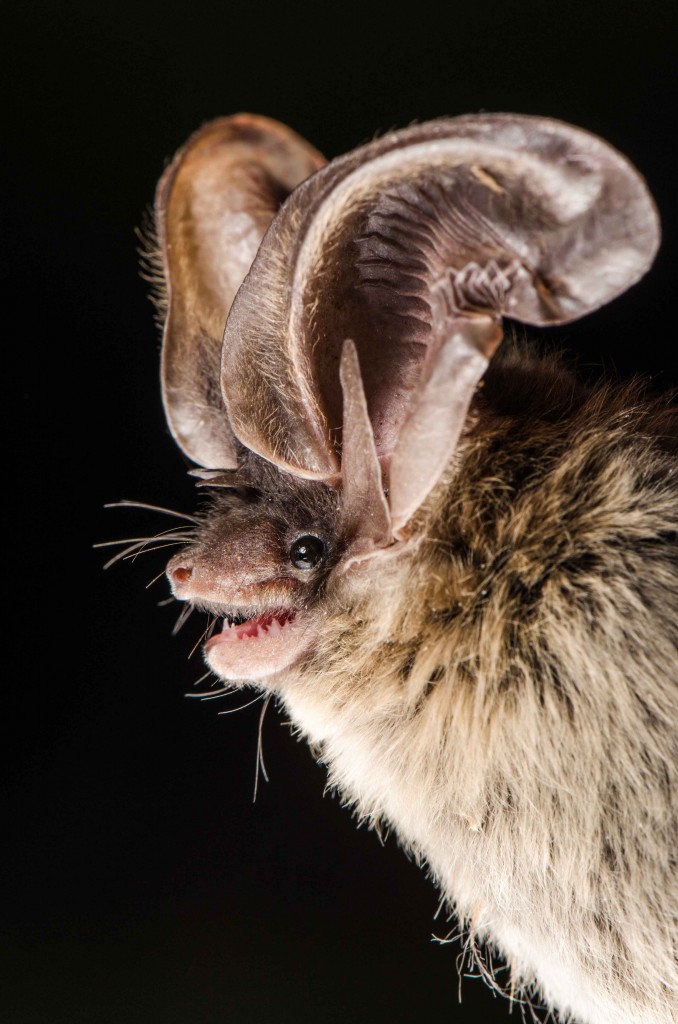
Allen’s Big-eared Bat, Idionycteris phyllotis. Photo Jose Gabriel Martinez.
A night’s batting near Flagstaff in 2018 produced South-western, Arizona, Long-eared, Fringed and California Myotis, a Brazilian Freetail, along with Sliver-haired, Hoary, Pallid, Big Brown and Allen’s Big-eared Bats. We also saw Elk, Gunnison’s Prairie Dogs and Mogollon Voles.
In 2022 I saw plenty of Gunnison’s Prairie Dogs along Prairie Dog Lane (seriously!) north east of the city. Friends living along that road had lots of Grey-collared Chipmunks and Golden-mantled Ground Squirrels running around their backyard.
Grand Canyon
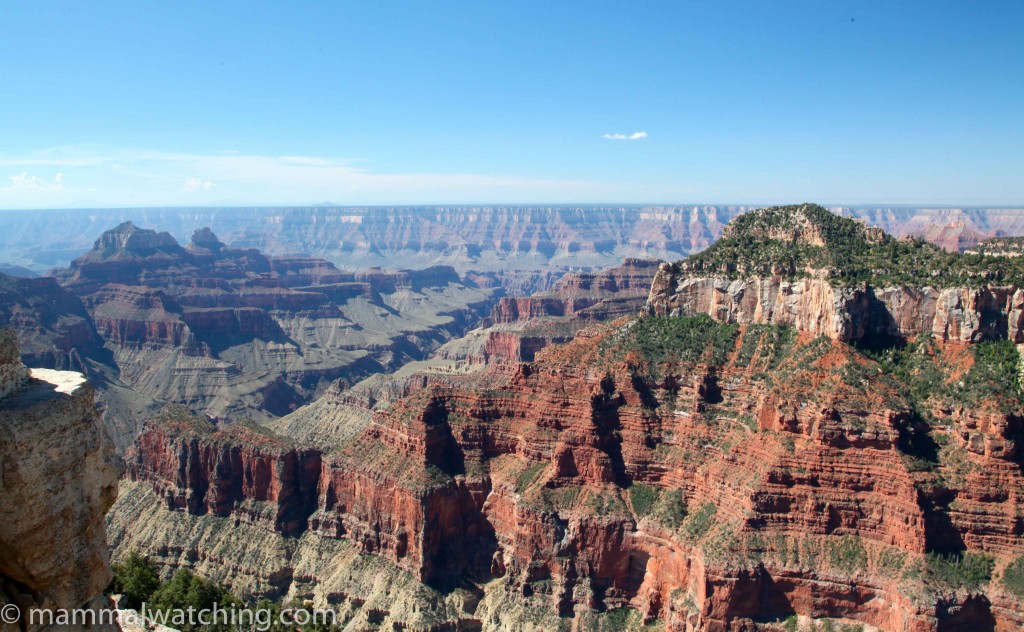
North Rim, Grand Canyon
In November 1989 I hiked to the bottom of the Grand Canyon, camped for night, and hiked back up. My legs were still hurting a month later. I saw a few Bighorn Sheep on the main trail down to the canyon floor. And during the night one or more Ringtails was determined to eat our food. We were in a backcountry campsite on the canyon floor. I hung the food from a metal pole, which the Ringtails climbed like a ladder. I greased the pole with butter, which did nothing to slow the Ringtails down. And so I left the food under a frying pan weighted down with rocks. In the morning the pan and rocks were unmoved …. but the food had gone. It was a hungry walk back to the top. I hate Ringtails.
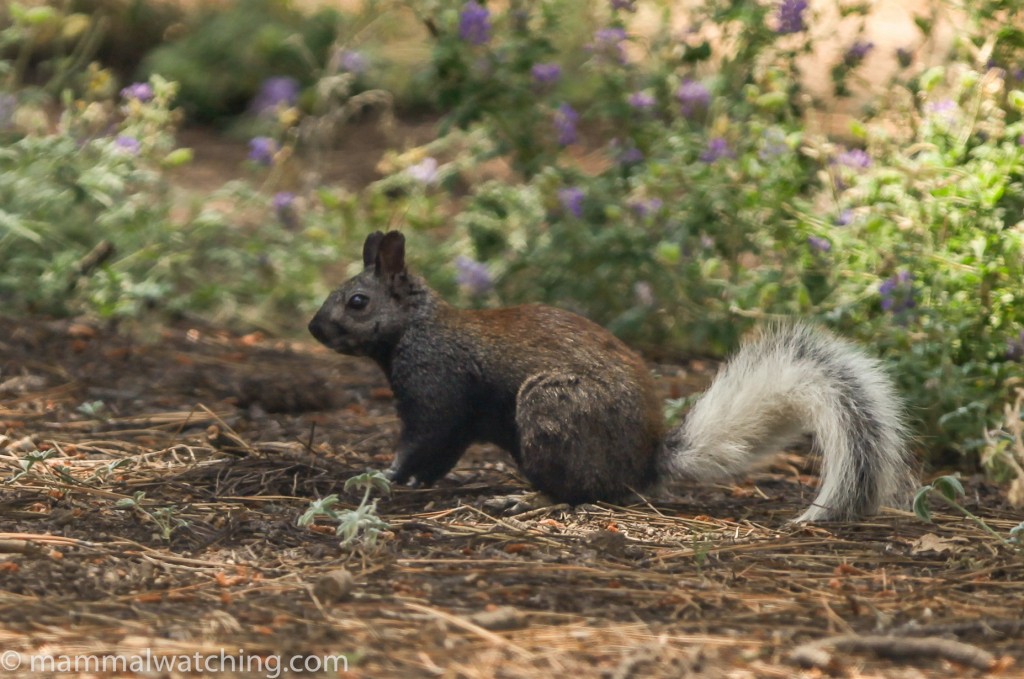
Abert’s Squirrel, Sciurus aberti
In August 2010 I visited the North Rim and found Abert’s Squirrel (the rather spectacular white-tailed subspecies) in the campground, although it took an hour to spot one. A different subspecies is supposed to be common in suburban Flagstaff and the Flagstaff Aboretum is one place to look. There were also Uinta Chipmunks around the Canyon Rim and a herd of Bison on the drive in.
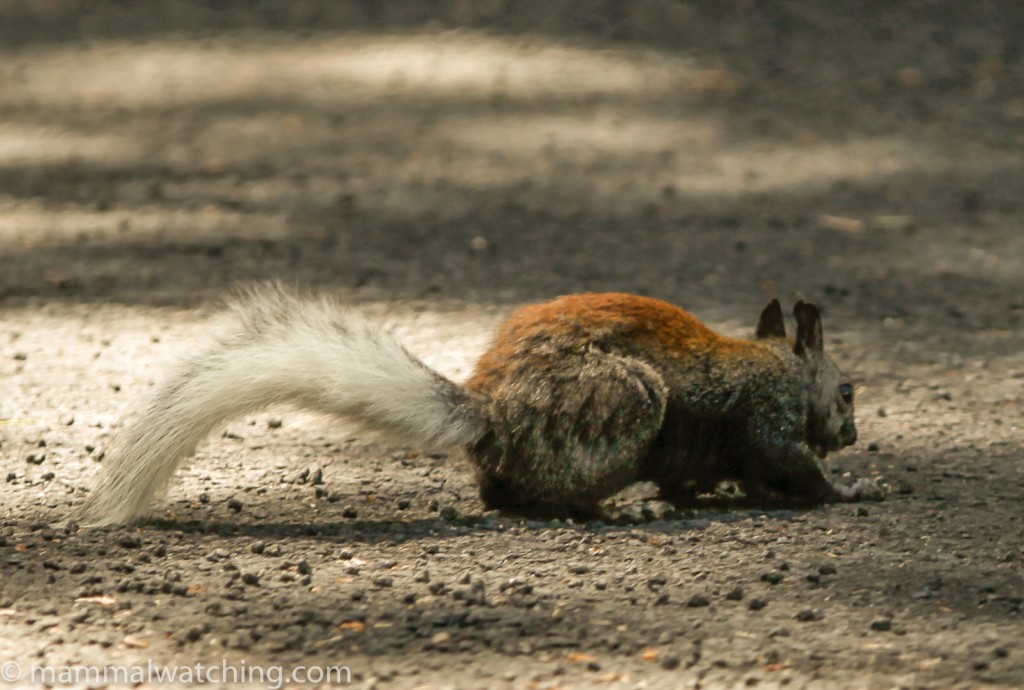
Abert’s Squirrel, Sciurus aberti
In July 2018 a night’s batting on the Kaibab Plateau caught a lot of animals, including two Spotted Bats.
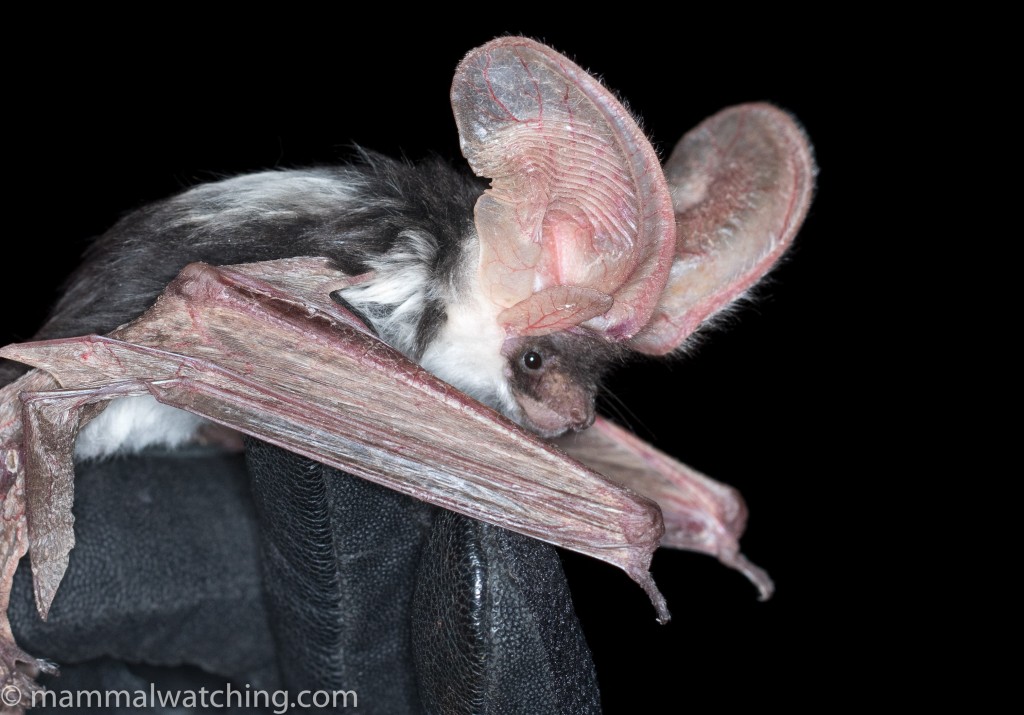
Spotted Bat, Euderma maculatum
We also caught Long-eared, Long-legged, Fringed and Western Small-footed Myotis, a Brazilian Freetail,and Sliver-haired, Hoary and Big Brown Bats. In the day time we saw a Fremont’s Squirrel, a Rock Squirrel, Elk, Mule Deer, Bison and Uinta Chipmunks. We also heard Western Bonneted and Big Free-tailed Bats.
In 2022 a dawn visit to the South Rim produced a spectacular sunrise and a very tame Cliff Chipmunk near the parking lot.
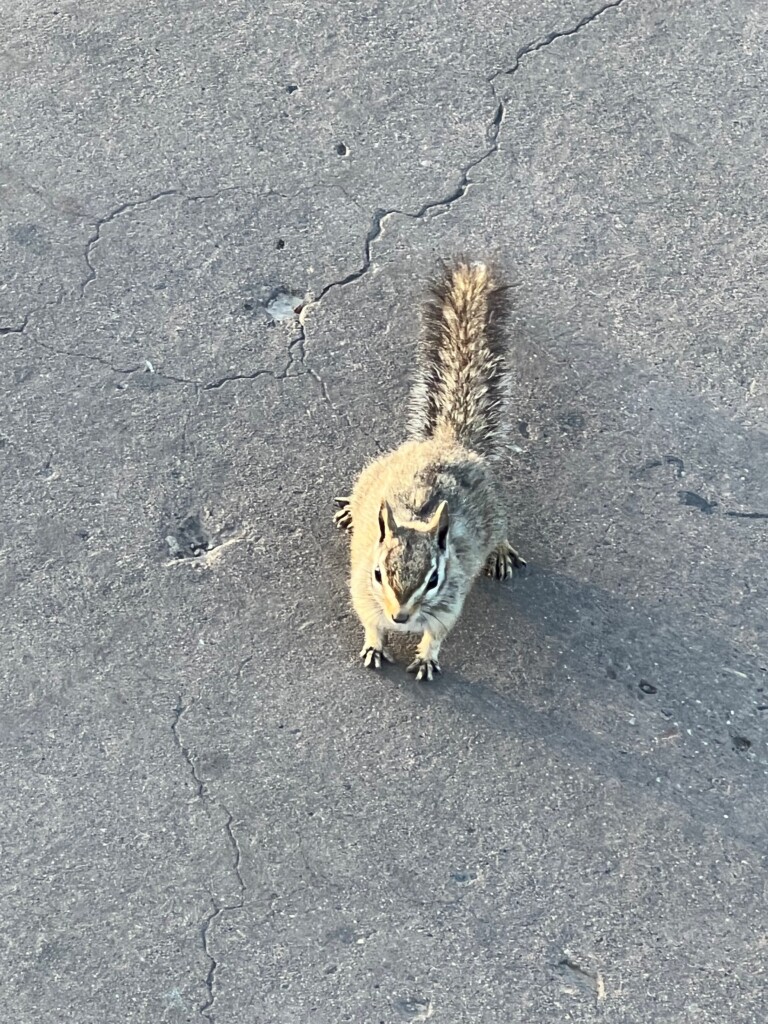
Cliff Chipmunk, Tamias dorsalis
IN 2010 Trent Binford-Walsh told me that Western Spotted Skunks are easy to see at the base of the Canyon where they hang around Phantom Ranch looking for food.
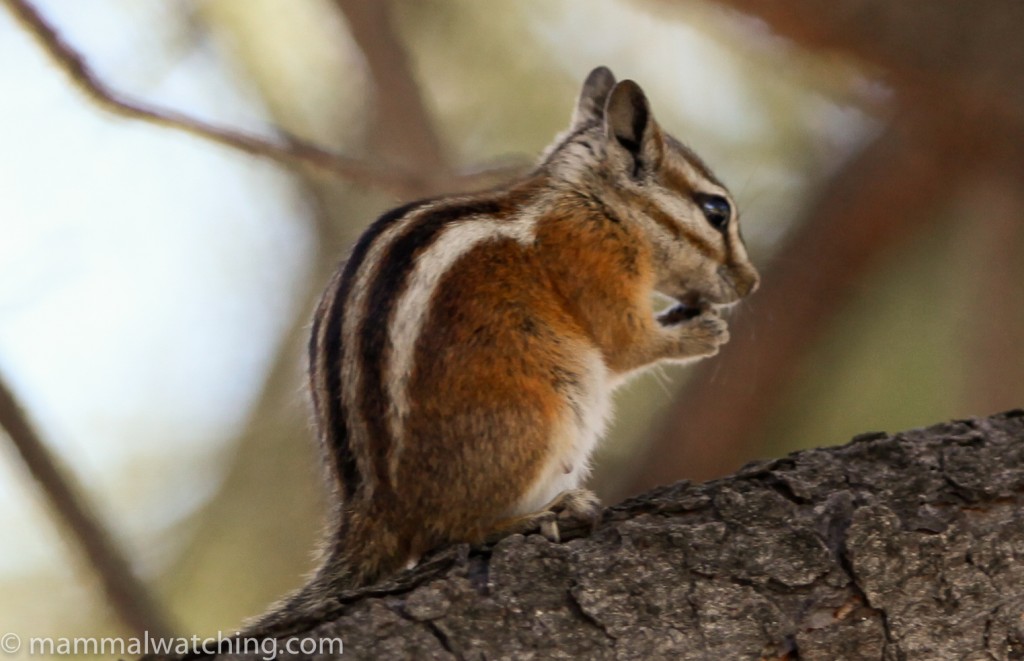
Uinta Chipmunk, Neotamias umbrinus
Montezuma’s Castle
I don’t remember much about visiting here in November 1989, other than seeing an Arizona Gray Squirrel.
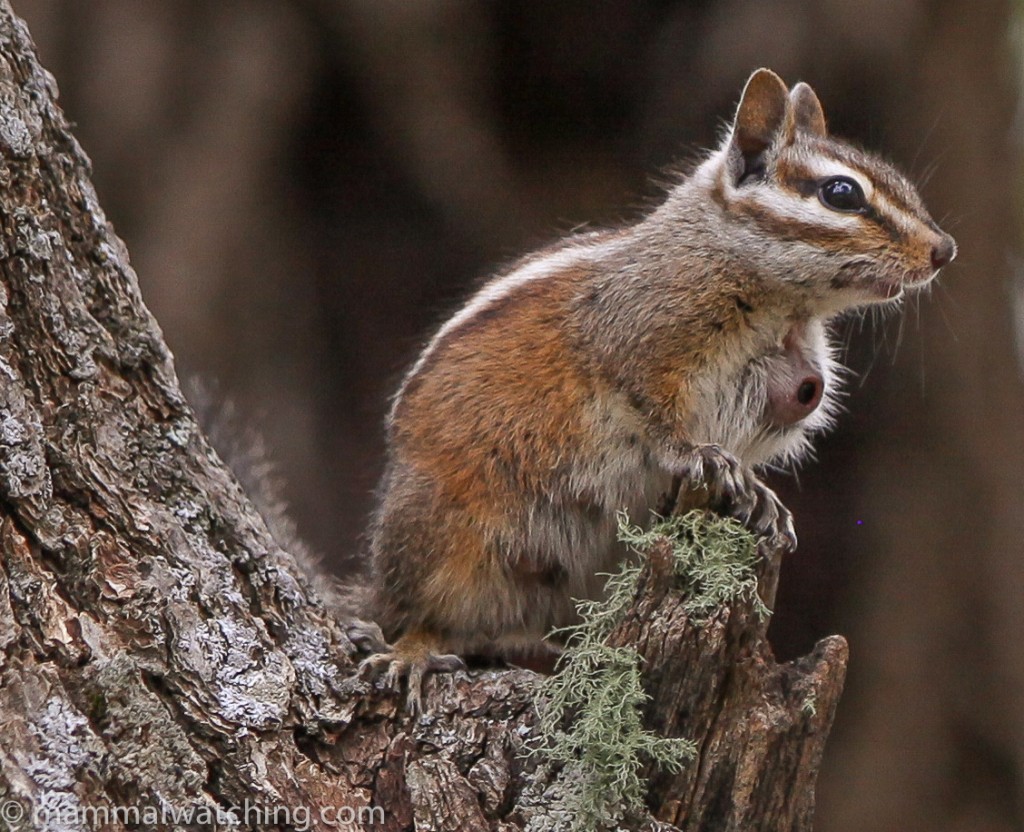
Grey-collared Chipmunk, Neotamias cinereicollis
Springerville
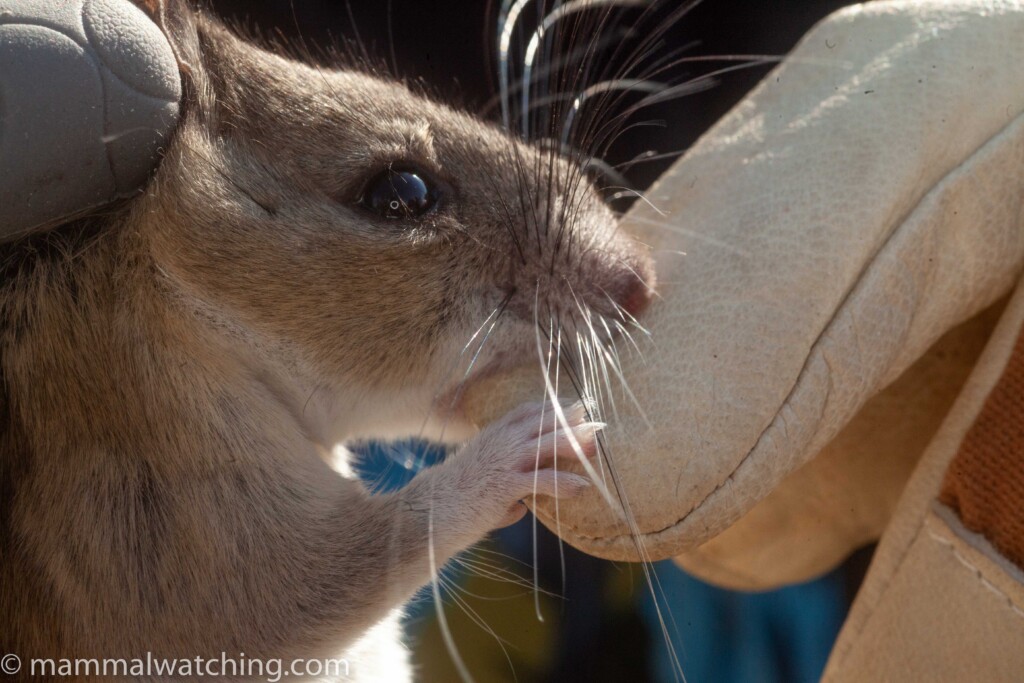
Mexican Woodrat, Neotoma mexicana. Photo Patrick Hall
One night in 2022 produced Silky Pocket Mice; Banner-tailed Kangaroo Rats; and a Mexican Woodrat; plus Western Deer, Brush and Northern Rock Mice. Together with Gunnison’s Prairie Dogs; Elk; Black-tailed Deer; Pronghorn and Desert Cottontails.
Vermillion Cliffs National Monument
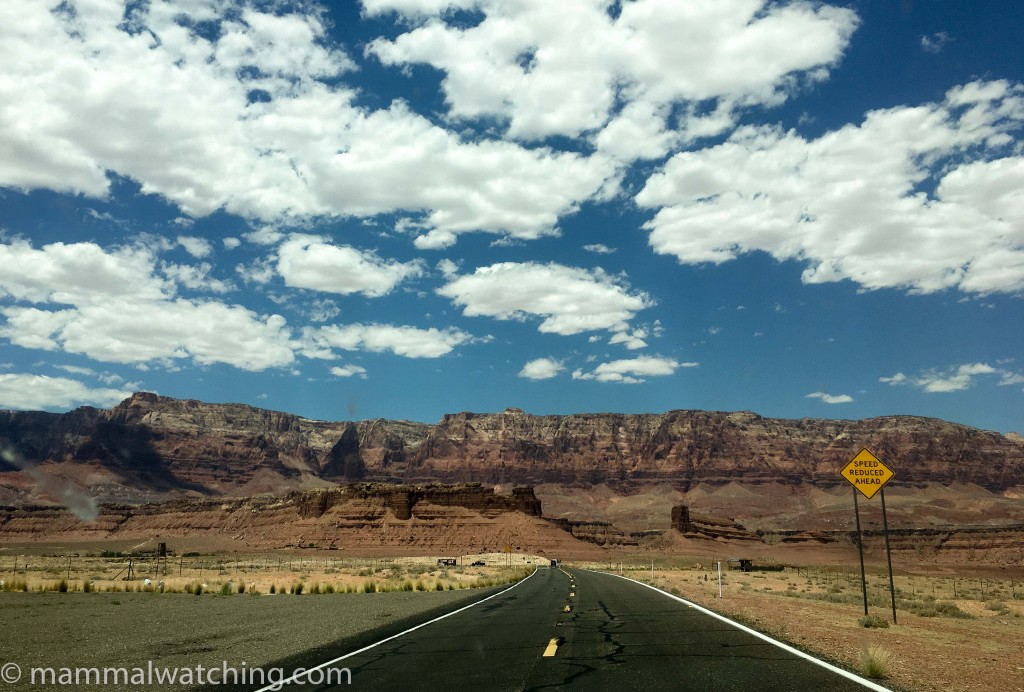
Route 89a
I visited here in August 2010, September 2013 and July 2018. The mind blowing scenery alone justifies the drive to this area of northern Arizona.
The entrance road to Vermillion Cliffs (BLM/Bureau of Land Management road 1065, about 13 miles east of Jacob Lake off of Hwy 89A ) is quite near to the North Rim of the Grand Canyon and a site for Chisel-toothed Kangaroo Rats. John Fox found one along here in 2010. In 2010 I spent an hour spotlighting here with Matt Miller and although I saw one kangaroo rat I couldn’t see it well enough to be sure which species it was. There were a lot of bats feeding around the start of the road with clearly audible echo-location but apparently several species in the area fit that description.
In September 2013 there were lots of kangaroo rats along the road. I suspect most were Chisel-toothed given the habitat they were burrowing in (lots of pebbles and heavy soil – with Ord’s the only other possibility there), though as usual it was hard to get them to stay still long enough for a good look. I did see at least one well enough to be sure it was a Chisel-toothed. There was a Coyote out there too, and Elk in the forest just a bit further north along Hwy 89a.
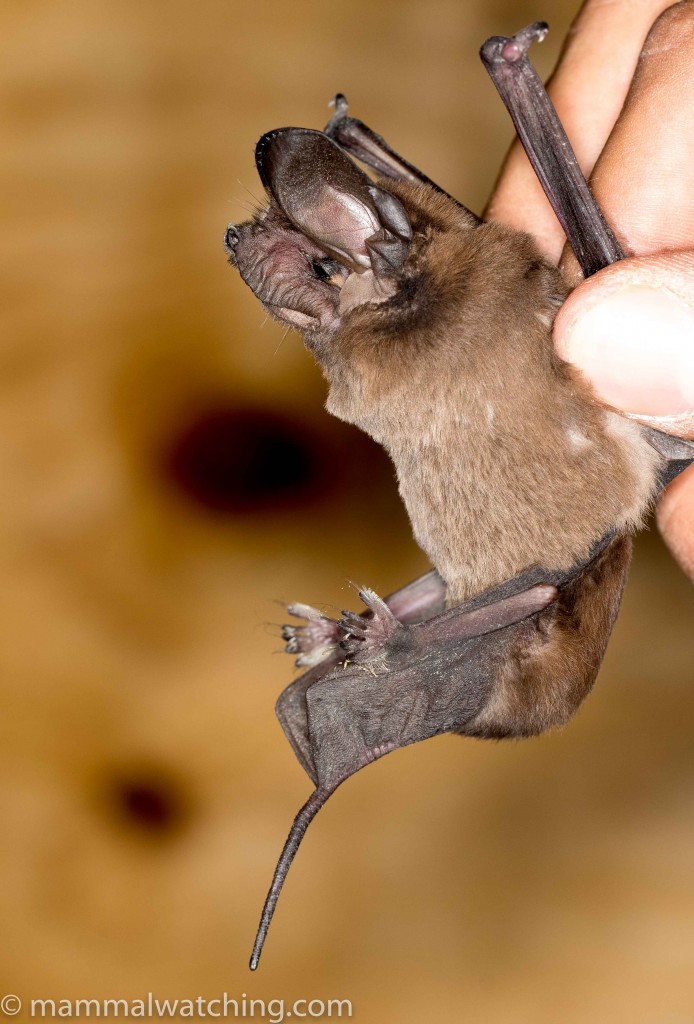
Big Free-tailed Bat, Nyctinomops macrotis
Two nights batting in July 2018 produced Yuma and Californian Myotis, Canyon and Pallid Bats and Brazilian and Big Freetail Bats. Other mammals comprised Black-tailed Jackrabbits, American Badgers, Ords Kangaroo Rats, Canyon Mice and White-tailed Antelope Squirrels.
Woods Canyon Lake
In September 2012 Grey-collared Chipmunks were easy to see here around the edge of the campsite a mile or so from the lake. They reacted very loudly when I squeaked. This species is also at the Flagstaff Arboretum though I haven’t seen them there.
South East Arizona
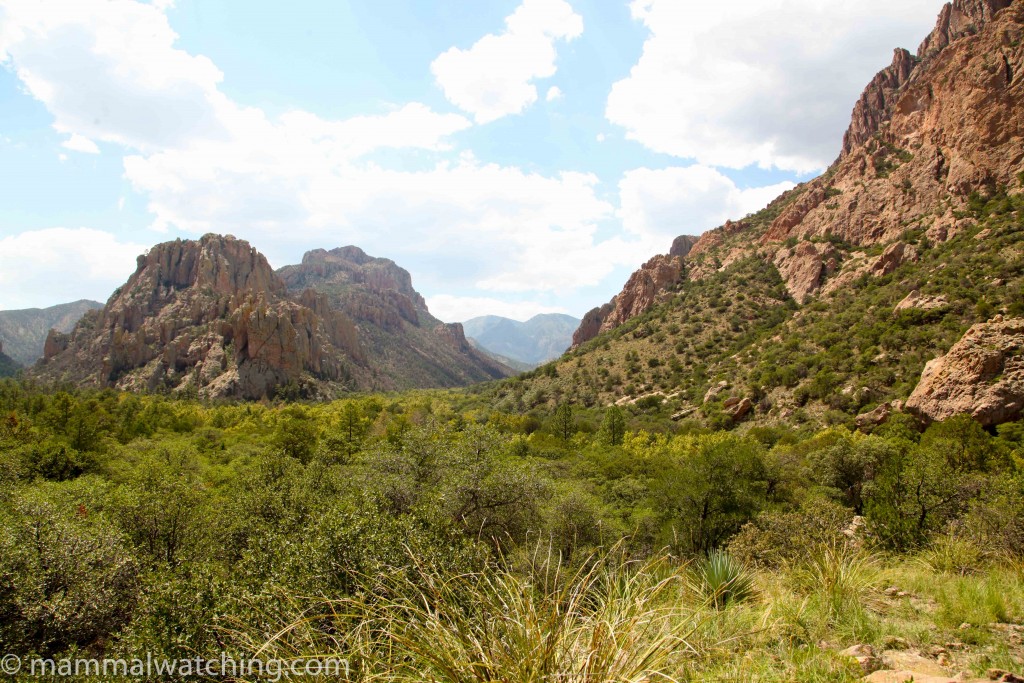
Chiricahua Mountains
Arivaca
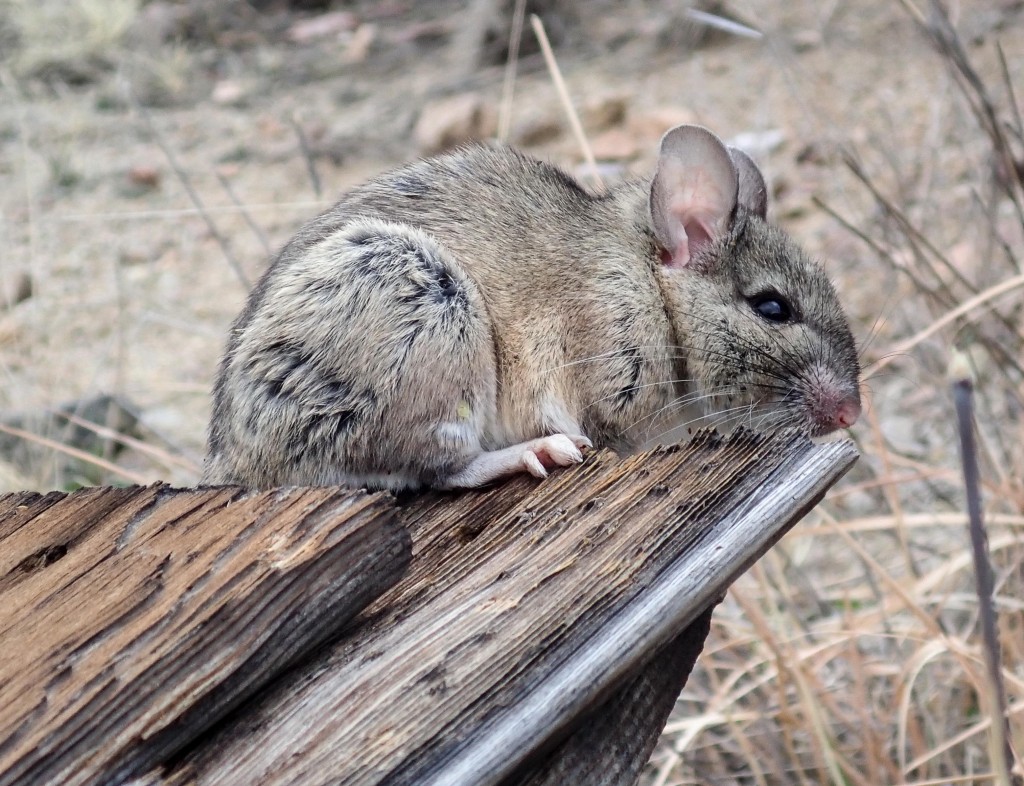
Western White-throated Woodrat, Neotoma albigula
I spent a couple of days in Arivaca, near Nogales on the Mexican border, to see Charles Foley and his family in March 2021. It was unusually cold (it even snowed) and small mammal activity was probably lower than usual. I saw a pale grey Botta’s Pocket Gopher in the garden of his AirBnB house (which I originally hoped was a Southern Pocket Gopher than are also in range here) and a Coyote and Mule Deer nearby.
We had permission to trap small mammals at nearby Ruby Ghost Town, a scenic place to camp, Despite the freezing overnight temperatures we caught several Western Deermice, a handful of Western White-throated Woodrats (all in the abandoned buildings) and a Brush Mouse.
Casa Grande Ruins National Monument
In April 2010 Round-tailed Ground Squirrels were common around the visitors centre. This species is also common in the Desert Botanical Gardens in Phoenix apparently.
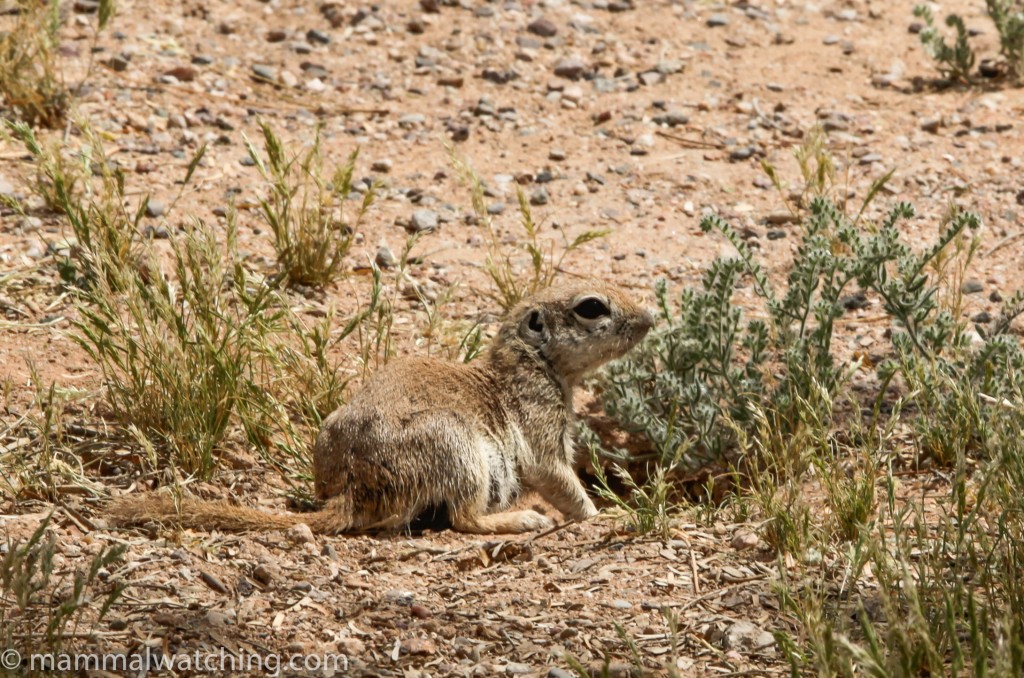
Round-tailed Ground Squirrel, Xerospermophilus tereticaudus
Chiricahua National Monument,
In September 1998 we saw Mexican Fox Squirrels around the campsite, Variegated Ground Squirrels, Cliff Chipmunks and Javelina (Collared Peccary).
Continental and Madera Canyon
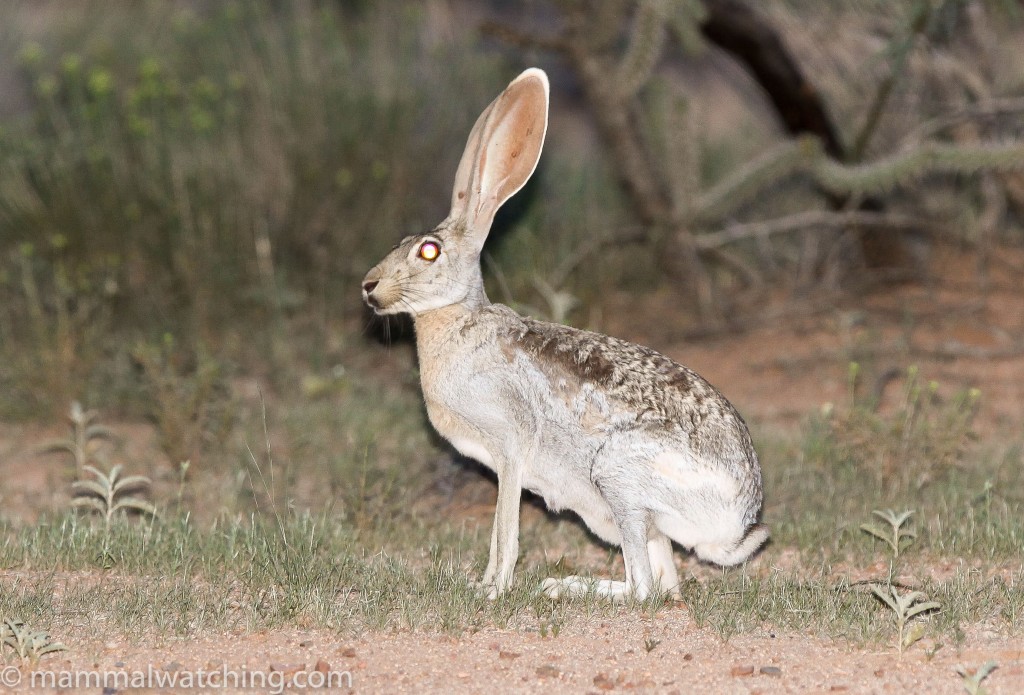
Antelope Jackrabbit, Lepus alleni
In September 2012 I found Antelope Jack Rabbits along the road south of Continental towards the birding sight Madera Canyon. John Fox saw 3 along here in the mid morning. I drove up and down the road late in the afternoon for an hour and a half before spotting one at dusk. An impressive rabbit. I was focusing on the desert along the first 5 miles of road out of Continental and saw a rabbit a mile along one of the dirt tracks off to the west.
The Santa Rita Lodge in Madera Canyon is in the middle of a mammalwatching hotspot. I have not stayed here but visited the area at night in March 2021 for two hours with Charles Foley and his family. We saw a Coati and a Ringtail around the hummingbird feeders (which are next to the road) and had a long look at a Hog-nosed Skunk a mile further along the road, plus Raccoons and a Grey Fox.
Mount Lemmon
In September 1998 I saw the Coues’ subspecies of White-tailed Deer, Odocoileus virginianus clavium, here.
MuleShoe Ranch
We stayed here for a night in September 1998. This lovel ecolodge had Hooded and Striped Skunks along the nature trail and Southern Long-nosed Bats feeding from the hummingbird feeders just milimetres from my face. I think I saw an Antelope Jackrabbit here too and almost trod on a rattlesnake. Coatis and Javelinas are fairly common, though I didn’t see either here.
Portal
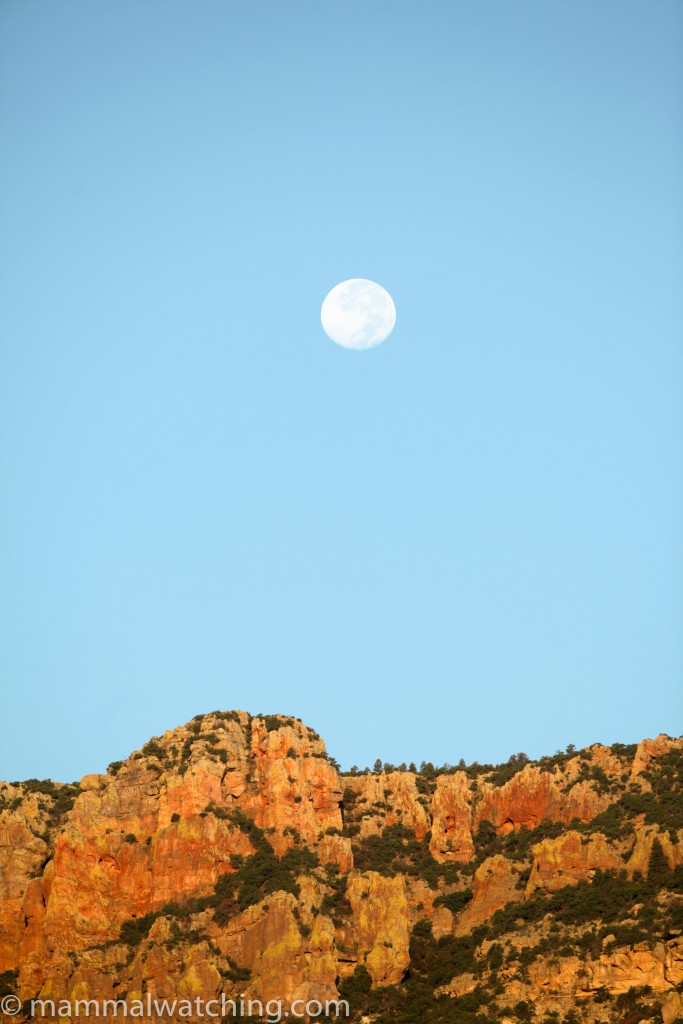
Full moon over Portal
This is one of the best areas in the USA for mammal diversity and I visited in Septembers 2012 & 13, and stayed at Cave Creek Canyon Ranch for a couple of nights each time. The ranch is a great spot for mammals and a good base to explore the area. The owner, Reed Peters, was also ready to let me throw out some Sherman traps on the property, even if I didn’t manage to catch much there.
Cave Creek is worth a mention as a sight in its own right. I did not spend a lot of time looking on the property but would have liked to have done if I had had a bit more time. But Yellow-nosed Cotton Rats were easy to see around the bird feeders and bats, presumably Mexican Long-tongued Bats, visited the hummingbird feeders after dark.
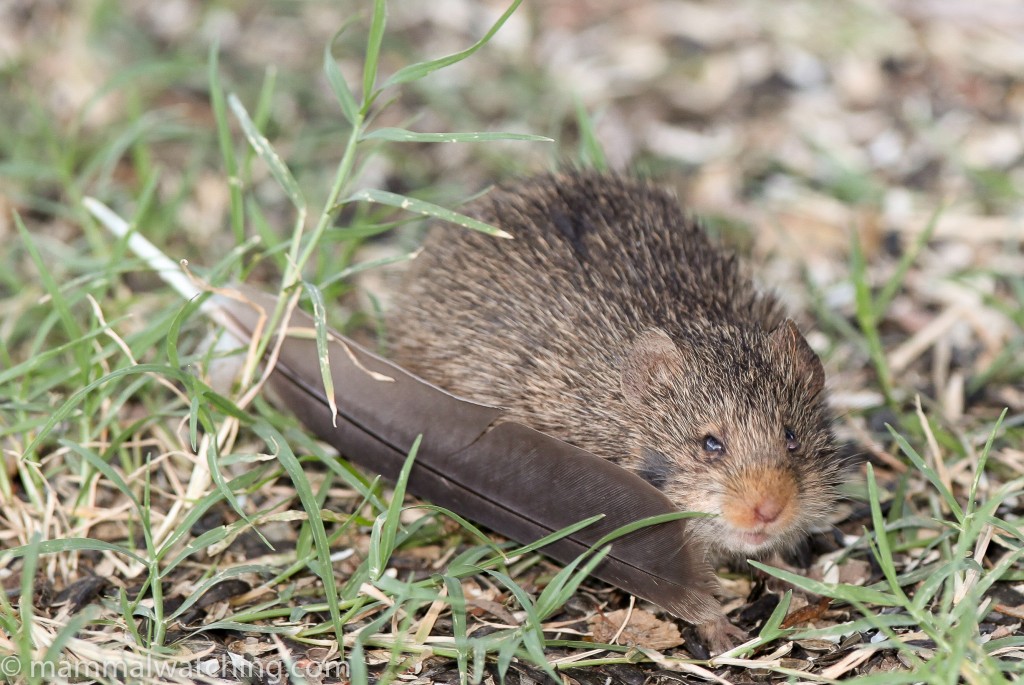
Yellow-nosed Cotton Rat, Sigmodon ochrognathus
Reed said White-throated Woodrats visited his house most nights but we couldn’t catch any. Other animals that visit the feeders regularly include Rock Squirrels, Cliff Chipmunks and Striped Skunks (all of which I saw) and Hooded Skunks, which I didn’t see. Reed had seen a Western Spotted Skunk once too in the creek behind the cabins.
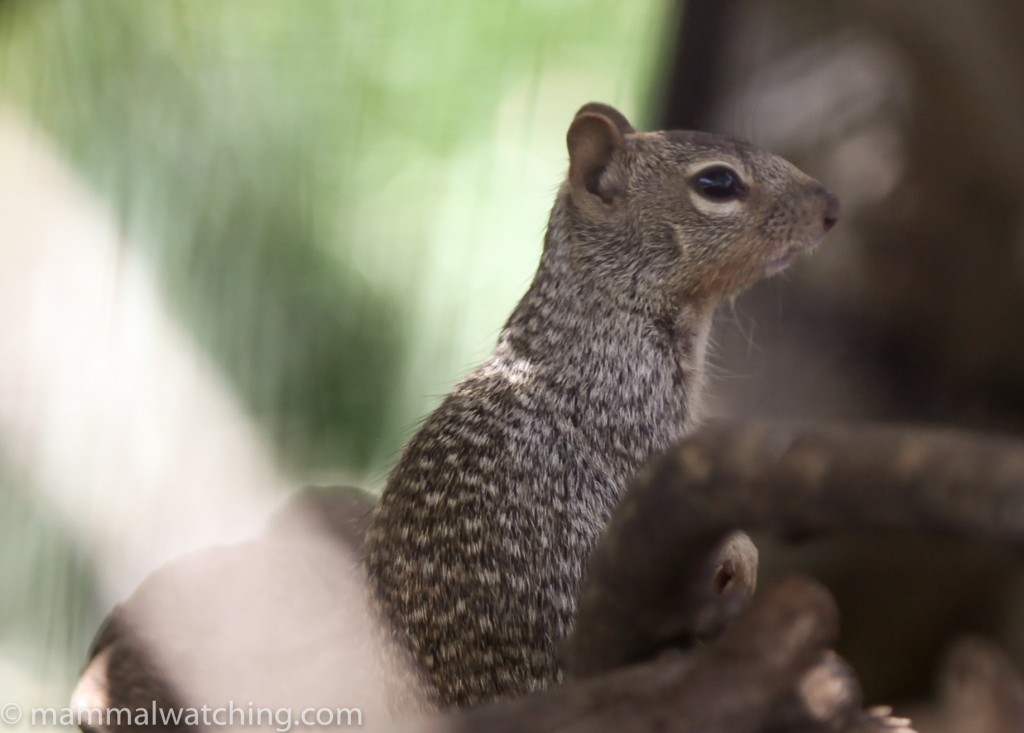
Rock Squirrel, Otospermophilus variegatus
In 2012 a Ringtail was denning in a tree near the cabins though I didn’t make an effort to see it. A pair of Black Bears were around both mornings near the cabins and they unfortunately developed an interest in my traps. Unfortunate for some of my traps, not for the bears!
I saw a Harris’s Antelope Squirrel along the driveway and White-tailed-Deer were common. Coatis and Javelinas are often here too.
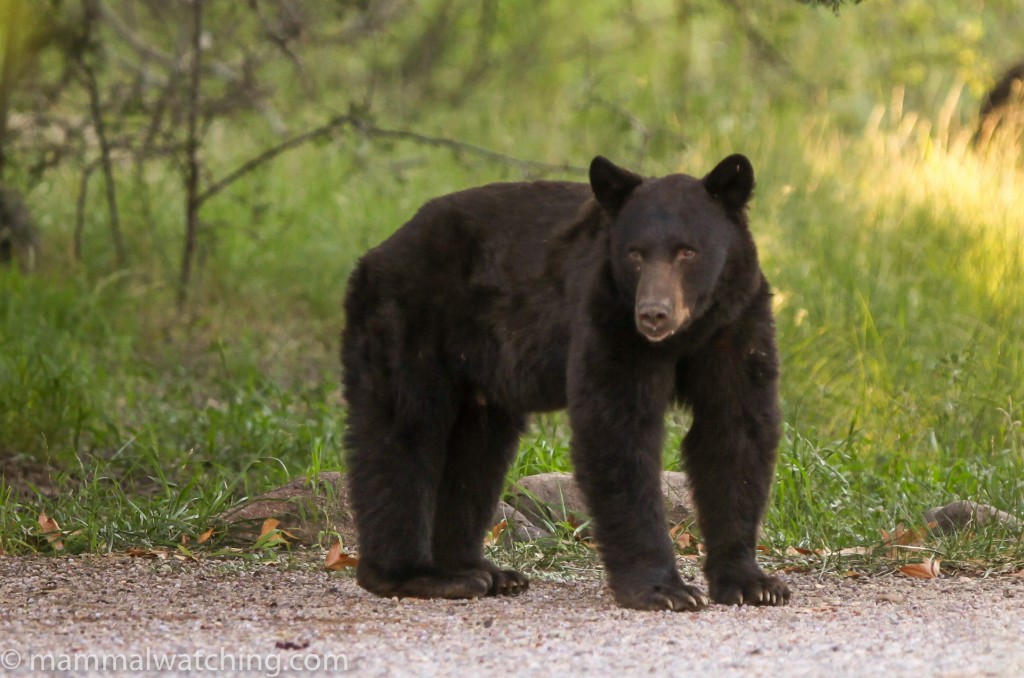
Black Bear, Ursus americanus
I spent most of my first evening in 2012 just over the border in New Mexico, looking for White-sided Jackrabbits.
During my second night, I found what I am almost sure was a Banner-tailed Kangaroo Rat pretty much where John Fox had seen them on Sunrise Road, which is off to the west at mile marker 412 along Rt 80 (this is 3 miles into Arizona and south of the town of Rodeo).
A set of humming bird feeders at the South West Research Station had plenty of bats visiting which were almost certainly Mexican Long-tongued Bats. Southern Long-nosed Bats are also possible here but they are very occasional and may have even migrated by September. There were lots of fresh gopher diggings on the lawn near the bird feeders.
Hog-nosed Skunks are in the area too, but much scarcer than Hooded and Striped.
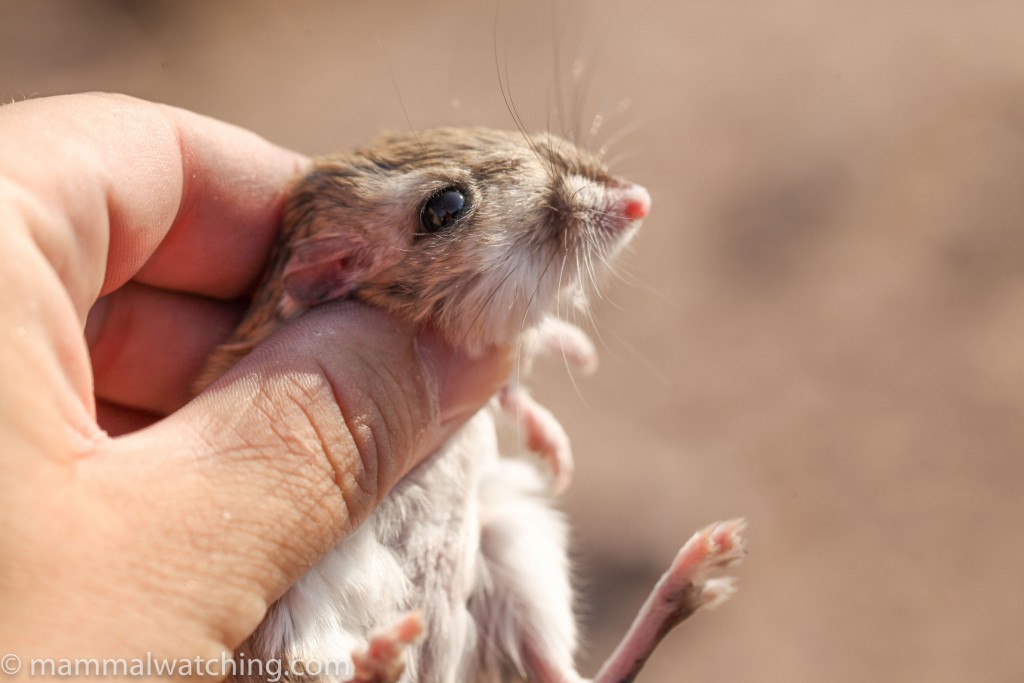
Merriam’s Kangaroo Rat, Dipodomys merriami
Small mammal trapping in the desert can be very unproductive but I was told of dam not far from Portal where I could set traps without a permit. It was indeed a good spot. In a couple of nights I caught a Merriam’s Kangaroo Rat and a Yellow-nosed Cotton Rat.
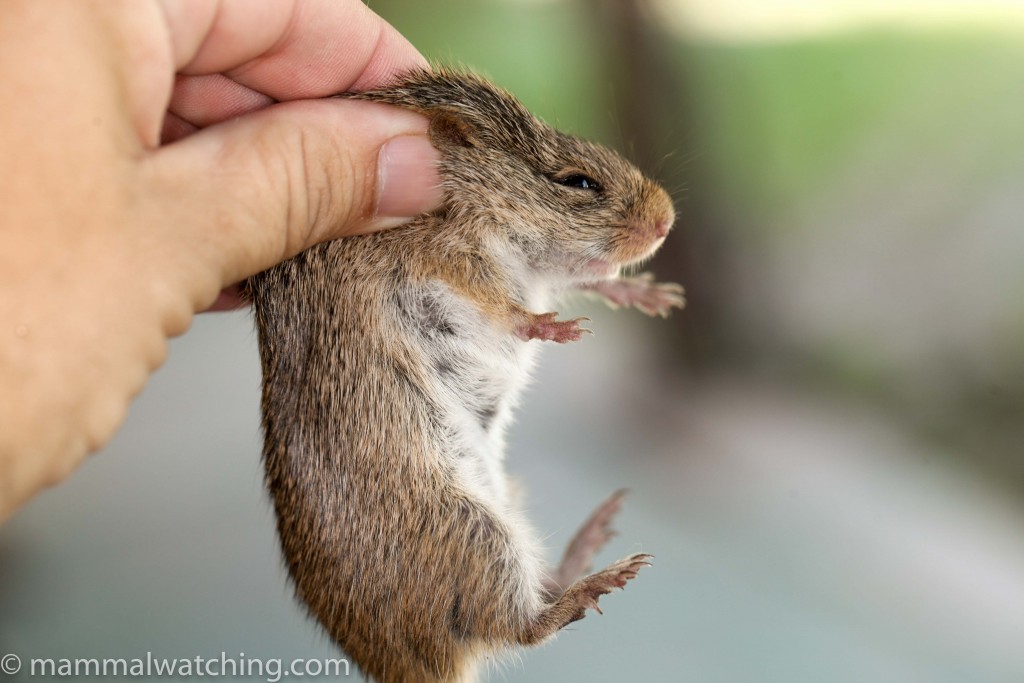
Yellow-nosed Cotton Rat, Sigmodon ochrognathus
A couple of Hispid Cotton Rats were trapped close to the water.
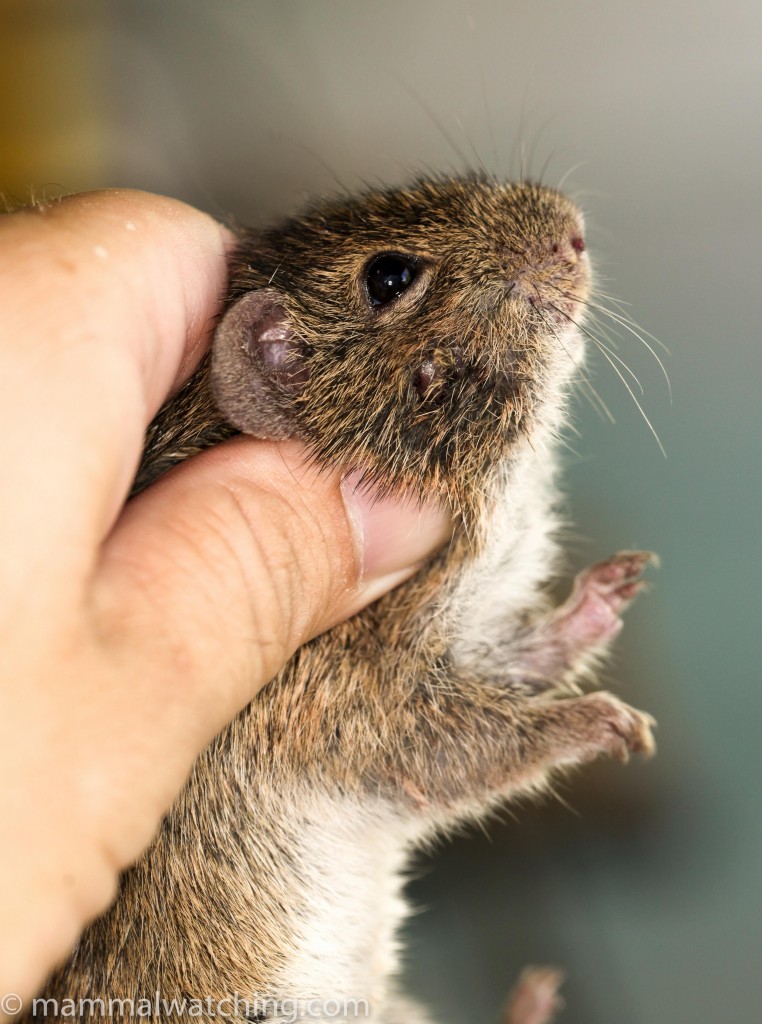
Hispid Cotton Rat, Sigmodon hispidus
As was this Tawny-bellied Cotton Rat.
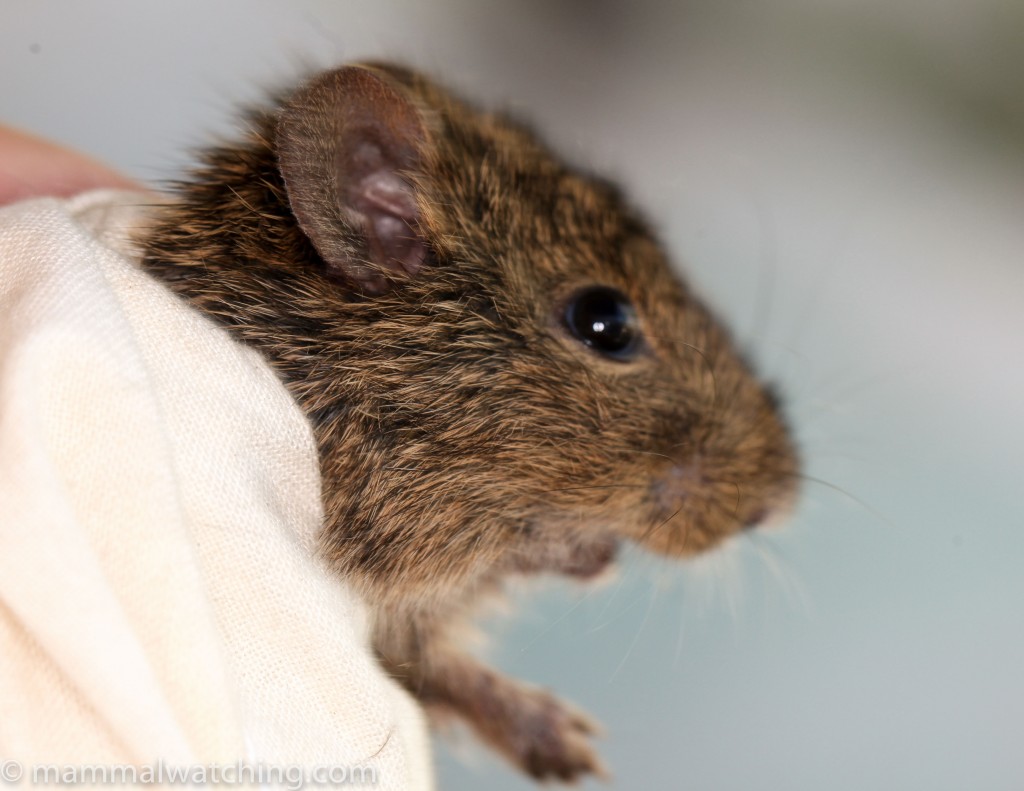
Tawny-bellied Cotton Rat , Sigmodon fulviventer
And I caught several Desert Pocket Mice in the desert.
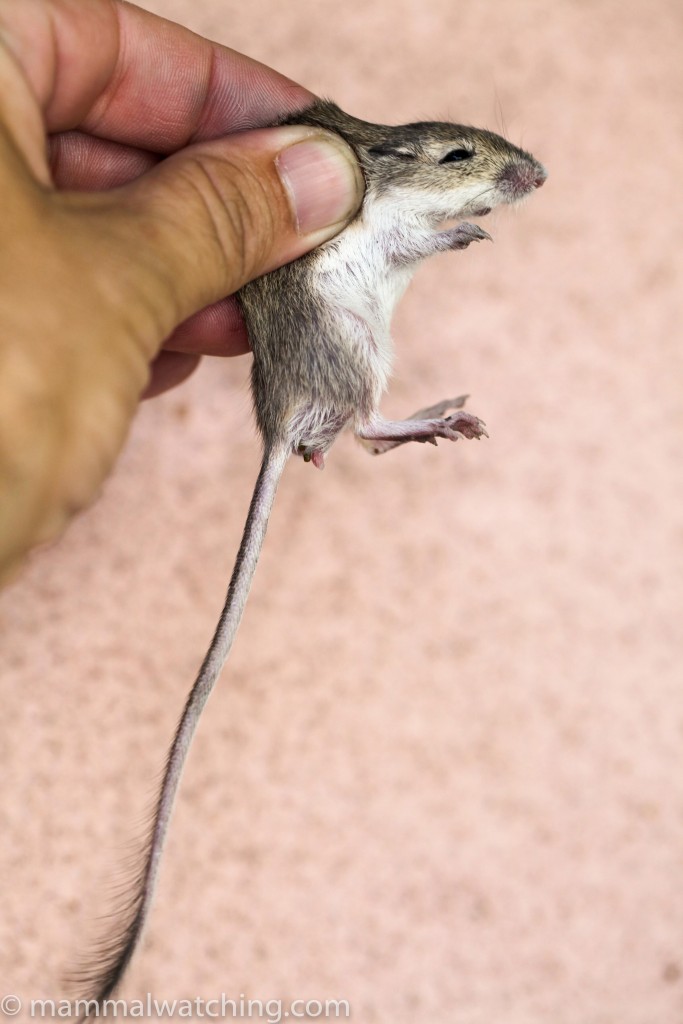
Desert Pocket Mouse, Chaetodipus penicillatus
Other species that have been caught here include Southern Grasshopper Mice, Banner-tailed and Ord’s Kangaroo Rats and Bailey’s Pocket Mice.
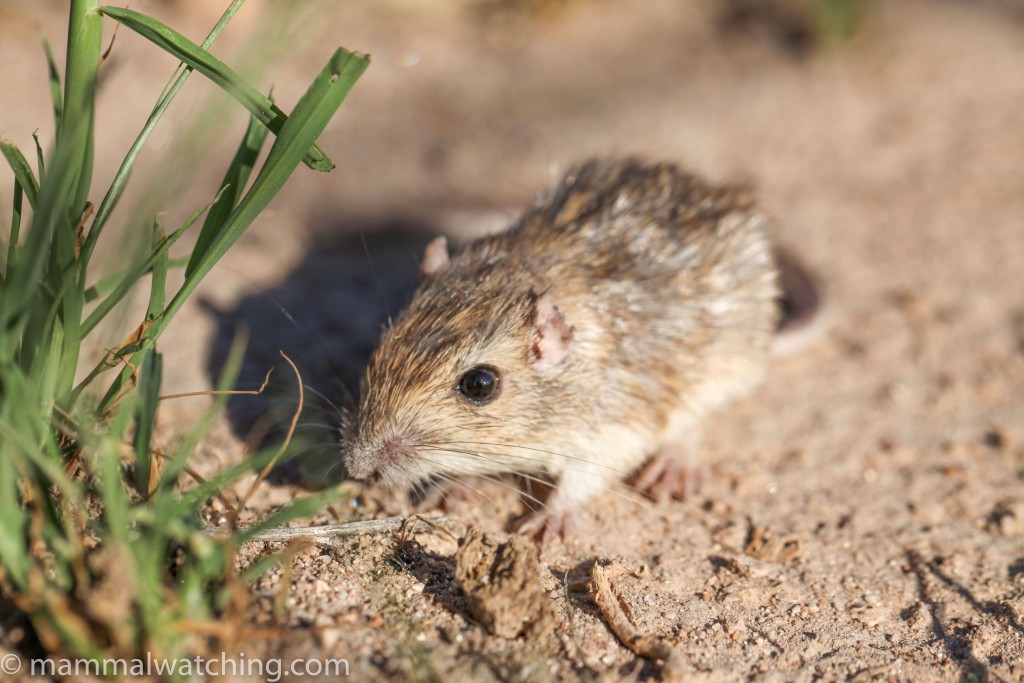
Desert Pocket Mouse, Chaetodipus penicillatus
As I was leaving Portal I stopped in at Quailway Cottage to visit the bird feeders where a couple of birders reported seeing a Spotted Ground Squirrel the previous day. I wasn’t there long enough to see the squirrel but it looks like another great spot to stay. The manager, John Yerger, is a bird guide who was helpful when I asked him about the local mammals but unable to go out with me to look for them. He’d be a good guy to meet up with next time. And there will be a next time because there are still many animals I’d like to see in this biodiversity hotspot. See my 2012 trip report for more details.
I returned in September 2013 for a night, mainly for more small mammal trapping. They didn’t disappoint and I caught more Desert Pocket Mice, plus my first Bailey’s Pocket Mice out in the desert and a Brush Mouse up at Cave Creek.
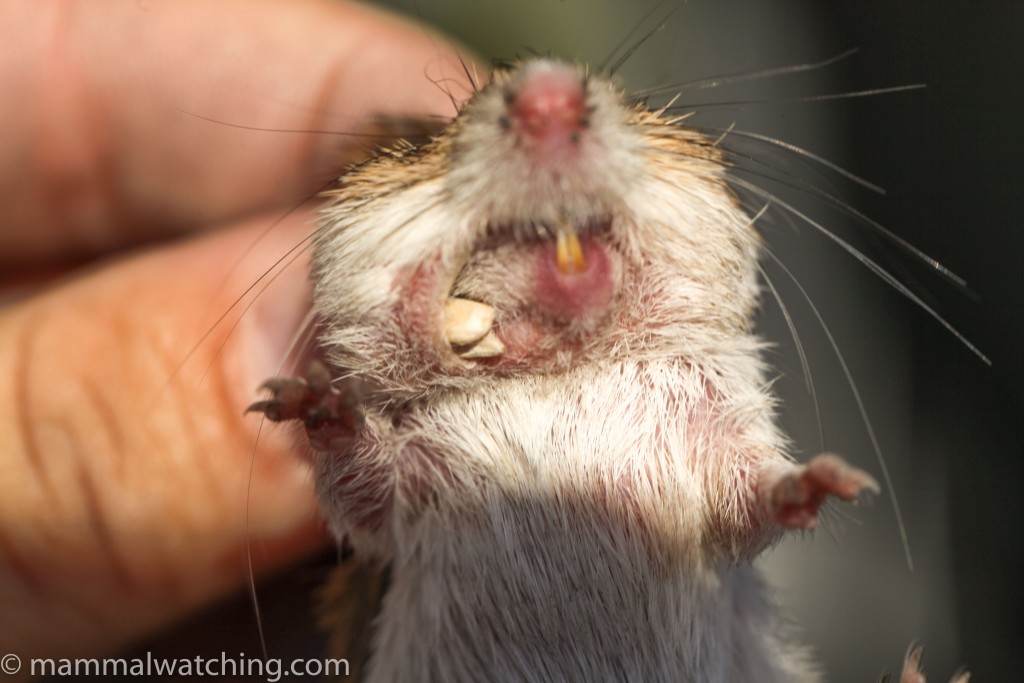
Bailey’s Pocket Mouse, Chaetodipus baileyi and its cheek pouches.
Richard Webb was, coincidentally, staying at Cave Creek too and it was good to finally meet him after corresponding for eight years. We spent three hours spotlighting.
We didn’t see a great deal on the road to Paradise, but down in the desert, along State Line road, there were lots of kangaroo rats (I guess both Merriam’s and Ord’s). I tried to get a better look at a Banner-tailed Kangaroo Rat than I’d had the year before but we couldn’t find any along Sunrise Road, other than a possible one among many smaller kangaroo rats. It disappeared before we could get a good look.
The highlight of the night were a couple of rattlesnakes on the road, and a Bobcat crossing the road near the Portal store. I saw both a Javelina and a Striped Skunk crossing the same stretch of road during the day too. And there were Black-tailed Jackrabbits along route 80.) See my 2013 trip report for more details.
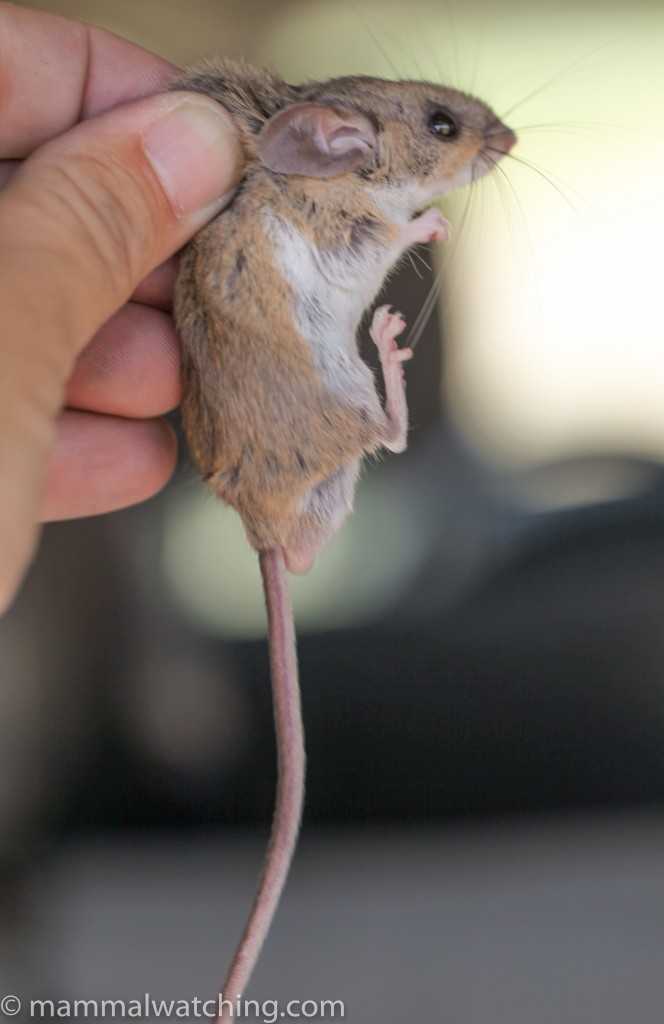
Brush Mouse, Peromyscus boylii
Tucson
The long long drive from Portal to Vermillion Cliffs goes through Tucson so in September 2013 I stopped in at the Sweetwater Wetlands, a sewage treatment works, just off Interstate 10, north of the city centre, to look for Arizona Cotton Rats, which were allegedly common and often diurnal.
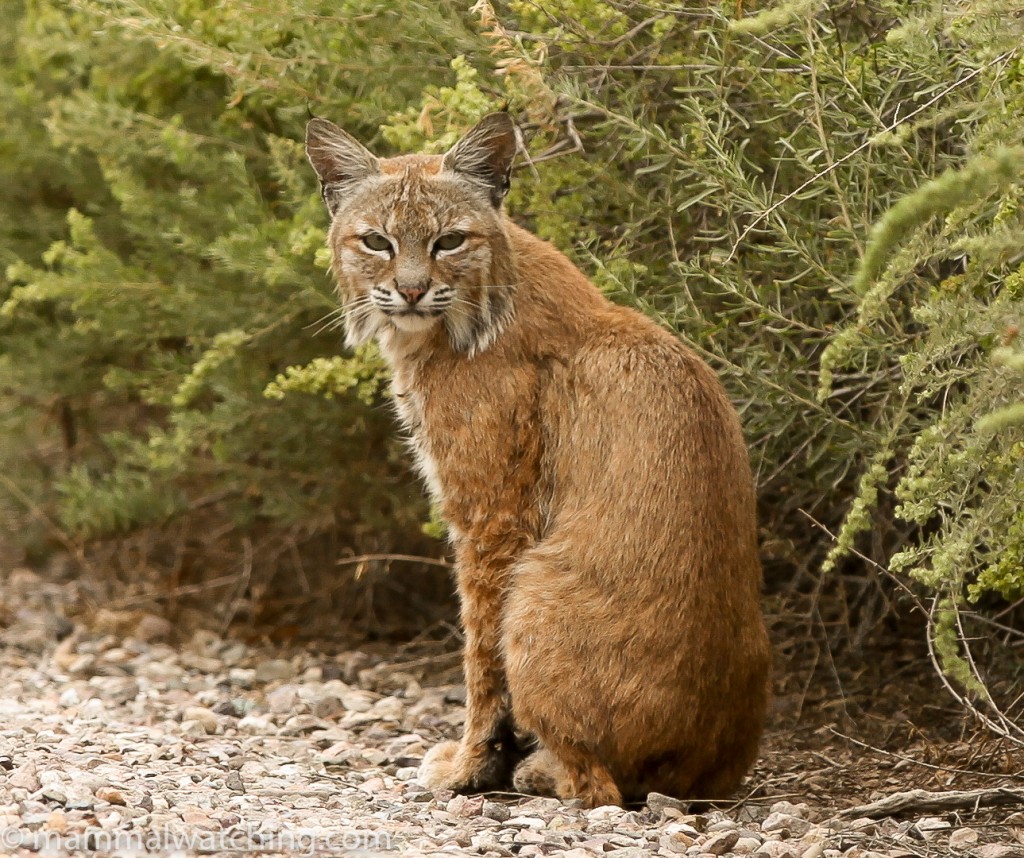
Bobcat, Lynx rufus
I didn’t arrive until 11 a.m. so it was perhaps not suprising I didn’t see any during my hour there. And the plagues of lizards here made it impractical to check out every rustling I heard. Apart from Desert Cottontails and a Rock Squirrel I got a great look at a Bobcat (the second I had seen in about 12 hours after seeing one in Portal the night before).
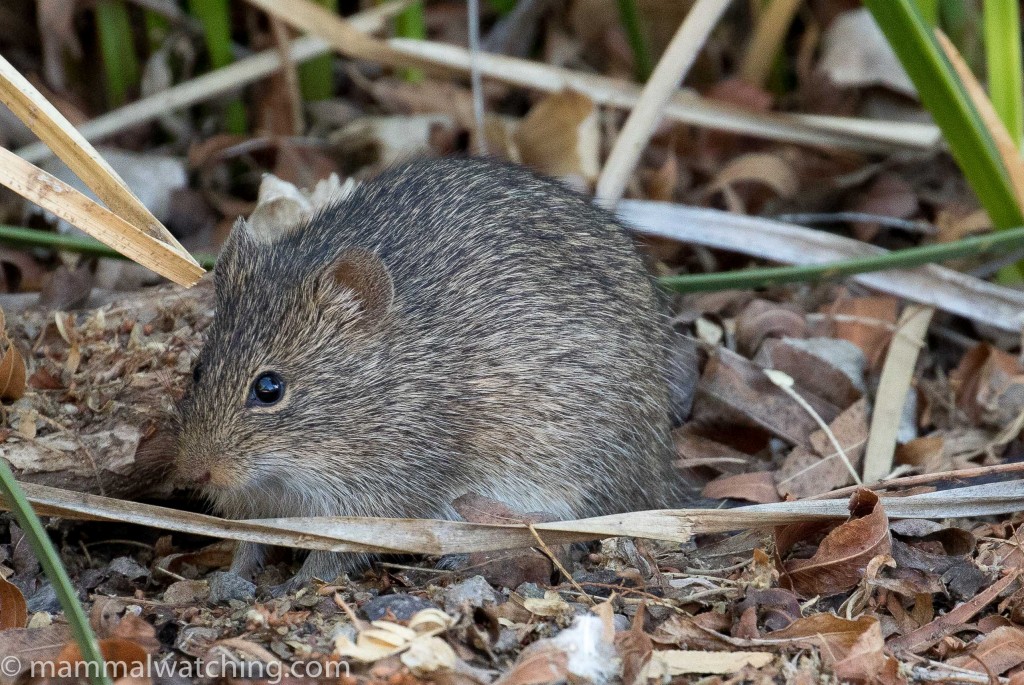
Arizona Cotton Rat, Sigmodon arizonae
I returned at sunrise in July 2018 and saw a couple of Arizona Cotton Rats, Round-tailed Ground Squirrels, Desert Cottontails, Black-tailed Jackrabbits and a Raccoon.
South West Arizona
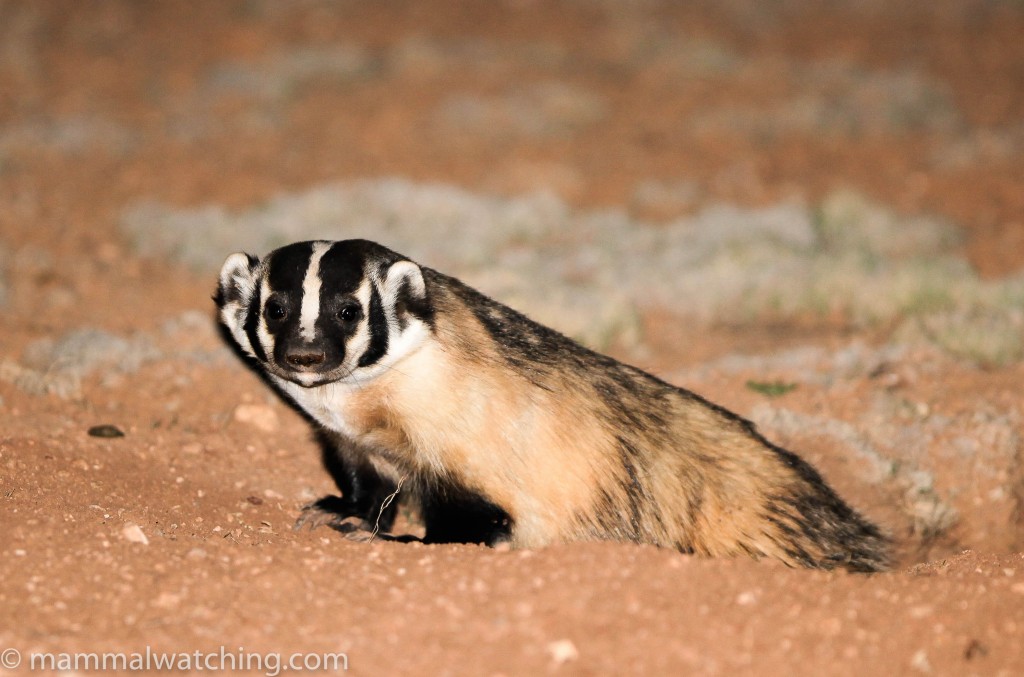
American Badger, Taxidea taxus
Salome
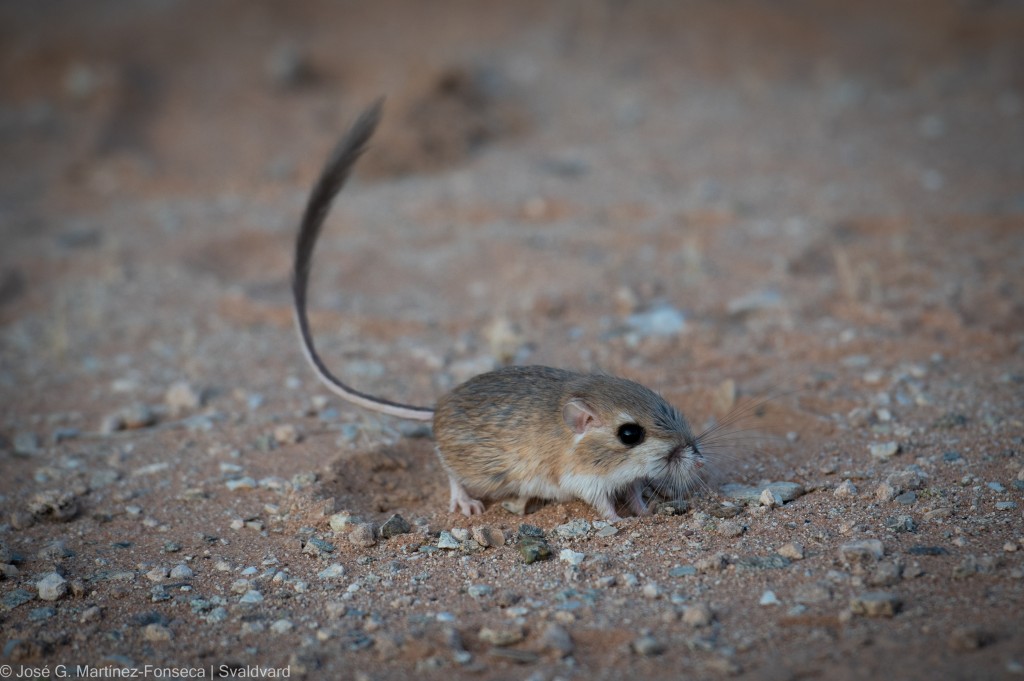
Merriam’s Kangaroo Rat, Dipodomys merriami. Photo Jose Gabriel Martinez.
In March 2021 I spent a couple of nights in the desert 2 hours west of Phoenix with Jose Gabriel Martinez. Our focus was on small mammals, and caught Cactus Mouse and White-throated Woodrats in rocky desert north of town, plusMerriam’s and Desert Kangaroo Rats close to Bouse. We also saw a lone Javelina and Black-tailed Jackrabbits.
Seligman
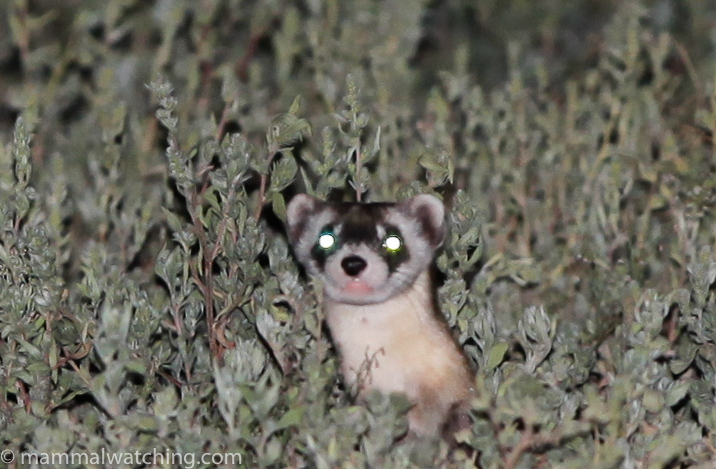
Black-footed Ferret, Mustela nigripes
A ranch just west of Seligman on Route 66, has successsfully reintroduced Black-footed Ferrets . I visited the town twice in 2010. During the day Gunnison’s Prairie Dogs are common, and at night you have an excellent chance of spotlighting a ferret along the northern side of Route 66. The best area is the 10 mile stretch that starts three or four miles west of Seligman running through the Aubrey Valley, and the ferrets are most active between midnight and 6 a.m.
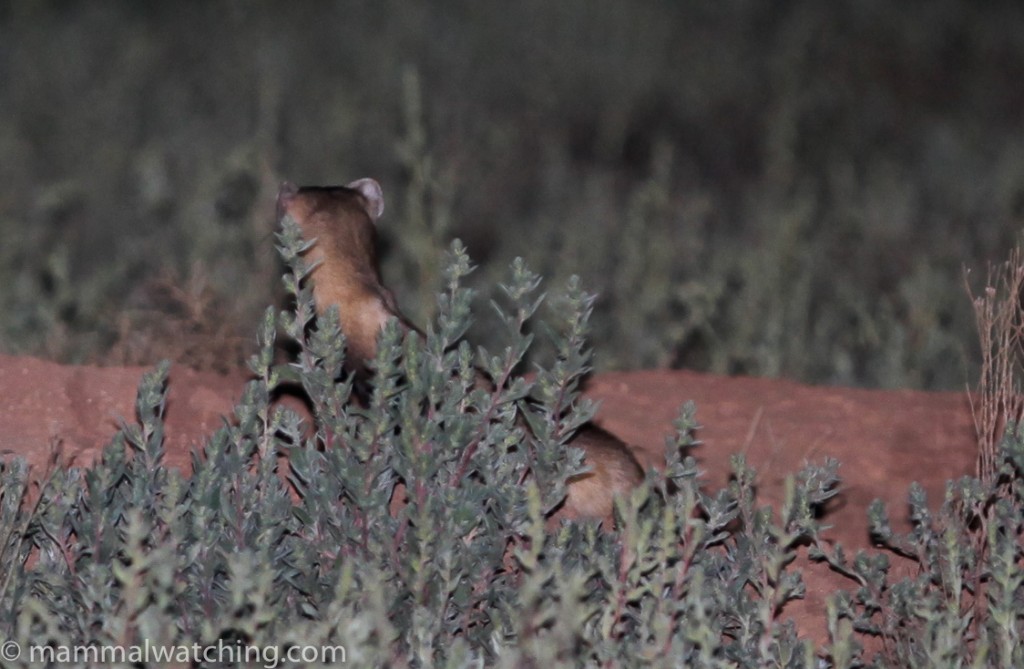
Black-footed Ferret, Mustela nigripes
.I spent 6 hours looking from 9 p.m. to 3 a.m. but couldn’t find one in April 2010. A week before people had been seeing as many as 13 during a night’s spotlighting! Immensely frustrating and my lack of success may well have been because the weather had turned cold or windy. But I did see three Badgers, Mule Deer, a kangaroo rat (probably an Ord’s), lots of Desert Cottontails and a Coyote.
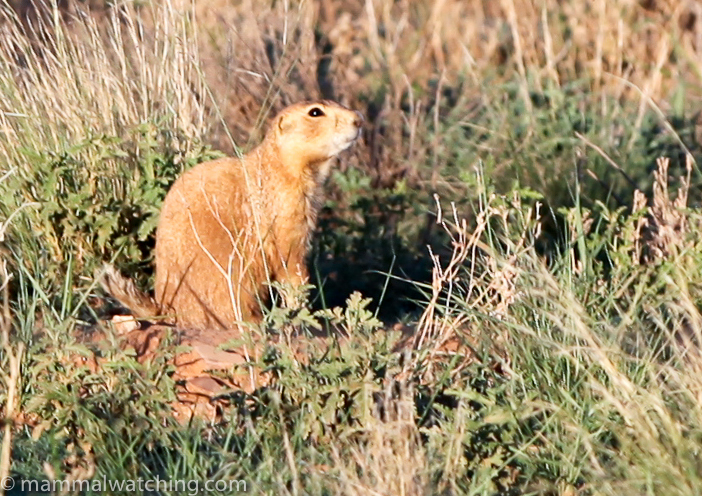
Gunnison’s Prairie Dog, Cynomys gunnisoni
I returned in August 2010. This time I left nothing to chance and persuaded Jennifer Cordova and Trent Binford-Walsh from the Arizona Game and Fish Department (and the Ferret Recovery Project) to make sure I didn’t fail twice. This which was extremely good of them and Jennifer had already provided a heap of info on where to look. They vowed to stay out til we found one!
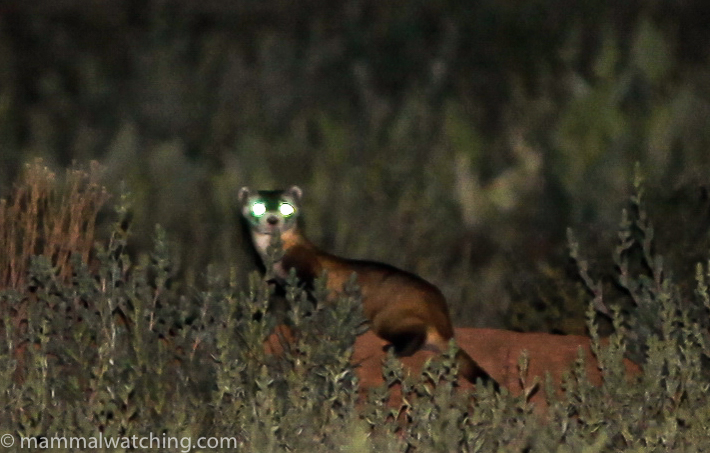
Black-footed Ferret, Mustela nigripes
But a late night wasn’t necessary. This time I found animals within five minutes of turning on the spotlight. A group of three ferrets were at a den about 50 metres south of Route 66 near mile marker 127. It was 10 p.m., the moon was full and the temperature about 75F. The animals have bright green laser like eyeshine.
Matt Miller and I approached animals to within about 10 metres at which point they finally went underground. But – just as Trent had predicted – once we got to the bolt hole an animal would pop its head in and out to take a peek. I was too close even to focus properly. A fabulous 20 minutes of mammal watching looking at a species I once thought I would never see in the wild!
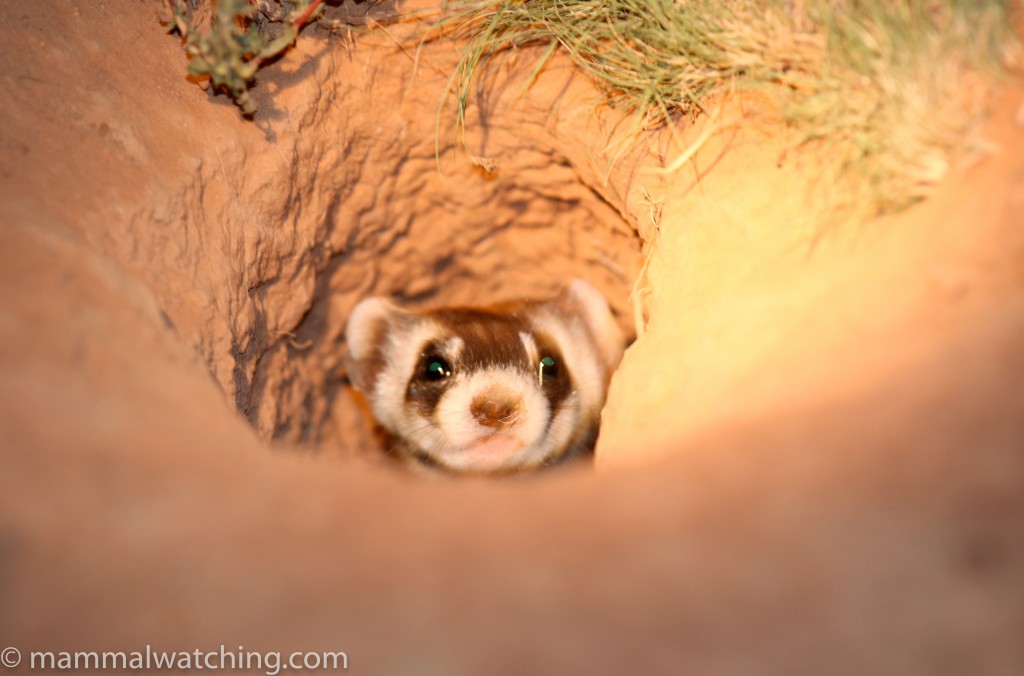
Black-footed Ferret, Mustela nigripes
Charles Hood sent me the following update “As of July 2012, Black-footed Ferrets remain present outside of Seligman, Arizona. Two different indivudals were seen by spotlight after 2300 hours north and south of mile marker 127, on the north side of Route 66. As a courtesy, let the ferret project staff know when you’ll be looking for them, so their wardens know who is spotlighting and why.”
In 2020 I heard from Justin Brown that no ferrets were caught in 2019 and none has been seen in 2020 either (though COVID didn’t help fieldwork). The colony may have succumbed to the plague … so check with the researchers to get the latest.
For more information see the Ferret Recovery Program’s site.
Community Reports
The World’s Best Mammalwatching
There is some very good mammalwatching in much of the North America, especially across the West and above the Arctic Circle. South-East Arizona has to be one of the most beautiful bits of the continent, if not the world, and it is wonderfully biodiverse. There are several species that just squeeze into the USA here. Around the village of Portal you can look for goodies like Black Bears and Mountain Lions, four species of skunks, White-sided and Antelope Jackrabbits, Yellow-nosed Cotton Rats and a lot of bats. Cave Creek Ranch is a great place to stay with many of these species on the property itself. See my 2012 and 2013 trip reports. See more of the World’s Best Mammalwatching.
Southeast Arizona, 2023: Michael Johnson, 5 nights & 19 species including Yellow-nosed Cotton Rat, Hooded Skunk and Ringtail.
The Chiricahuas, 2023: Venkat Sankar, 4 days & 53(!) species including Puma, White-sided Jackrabbit, Banner-tailed Kangaroo Rat, Chihuahuan Grasshopper Mouse, Allen’s Big-eared Bat, White-backed Hog-nosed Skunk and Ringtail.
Springerville AZ and Reserve NM, 2022: Jon Hall, 2 days & 14 species including Mexican and a probable Stephen’s Woodrat, Banner-tailed Kangaroo Rats and Silky Pocket Mice.
South-east Arizona update, June 2022: Charles Hood’s update on some recent mammal news from Portal, Madera Canyon and Tucson including Hog-nosed and Spotted Skunks and a Puma.
Southern Arizona, 2021: Jon Swenson and Jose Gabriel Martinez, 6 days & 50 species including Southern Pocket Gopher, 3 skunk species, Coati, Ringtail and Mexican Woodrat.
Madera Cayon, 2021: Charles Hood’s brief report of two nights including Coati, Pallid Bats and Ringtail.
SE Arizona, 2020: Charles Hood’s report of a few days and 24 mammal species including Ringtail, Hooded Skunk,Bobcat and Coati.
Tucson and Madera Canyon, 2019: Charles Foley, 2 nights and some nice species including Ringtail, Hog-nosed Skunk and Antelope Jackrabbit.
California, Utah & Arizona, 2019: Jan Ebr, 3 weeks & 31 species including Round-tailed Ground Squirrel, Ringtail & Arizona Grey Squirrel.
Western USA, 2019: Ralf Bürgin, 10 days & 31 species including Panamint Kangaroo Rat and Water Vole and plenty three subspecies of Bighorn Sheep.
Northern Arizona, 2018: Jon Hall, 4 nights & 35 species including Big Free-tailed Bat, Allen’s Big-eared Bat, Spotted Bat, Mogollon Vole and Fremont’s Squirrel.
Arizona and New Mexico (plus California and Texas), 2018: Dominique Brugiere, 1 month and many mammals including Ringtail, Hog-nosed and Western Spotted Skunks, White-sided Jackrabbit and a Badger.
Western Rodents, 2015: John and Karen Shrader, 10 days & 35 species including Apache Pocket Mouse, Banner-tailed Kangaroo Rat, Plains Harvest Mouse and Spotted Ground Squirrel.
Arizona, 2018: Curtis Hart, 2 months and 46 species including Mexican Vole, Cactus and Pinon Mouse and Arizona Woodrat.
California and Arizona, 2017: Dominique Brugiere, 1 month and many species including American Marten, Kit and Island Foxes, Hooded Skunks and Black-footed Ferrets.
Arizona, 2017: Sjef Ollers, 2.5 weeks & 33 species including Mexican Long-tongued Bat, White-nosed Coati and Hooded Skunk.
Arizona and Texas, 2017: Aidan Place, 19 days and 42 species including Hog-nosed and Hooded Skunks, Mountain Lion, Ringtail (at a bird feeder) and Gulf-coast Kangaroo Rats.
Western USA, 2017: Romain Bocquier, 40 days & 84 species including Hooded Skunk, Fisher and Banner-tailed Kangaroo Rat.
Chasing Squirrels and Chipmunks in the West, 2016: Andy Murch, 2 weeks. 1 marriage proposal & many rodents including Hopi and Cliff Chipmunks.
Aubrey Valley Spotlighting, 2016: Joshua Smith’s account of a weekend helping survey for Ferrets.
California & Arizona, 2015: Simon Feys, 3.5 weeks & an impressive 74 species, including Western Yellow Bat, Long-tailed Weasel, Black-footed Ferret, and some nice rodents.
Western USA, 2015: Michael Kessler, 6 weeks & 88 species(!) including Spotted Bat, Northern Right Whale Dolphins, Long-tailed and Water Voles, Wolf and Long-tailed Weasel.
South East California to West Texas, 2015: Brian Keelan, 24 days & 43 mammals, 24 of which were bats (the main focus of the trip) including Ghost-faced, Lesser Long-nosed, Allen’s Big-eared (Lappet-browed) and Underwood’s Mastiff Bats, Davis Mountain Cottontail and Mexican Fox Sqiurrel. Great stuff!
Arizona and New Mexico, 2013: Jon Hall, 4 days & 29 species including Ringtail, Manzano Mountains Cottontail, Mexican and Spotted Ground Squirrels.
Arizona, New Mexico & Nevada, 2013: Richard Webb, 10 days & 40 species including Ringtail, Badger, Black-footed Ferret, Desert Pocket Gopher and Bushy-tailed Woodrat.
Arizona, 2013: Mike Richardson, 2 weeks & 35 species. Great report with highlights including Black-footed Ferret, Ringtail and some nice rodents.
Arizona and New Mexico, 2013: Paul Carter, 24 days & 29 species including Hooded Skunk, Kit Fox and White-nosed Coatis.
South East Arizona and a bit of New Mexico, 2012: Jon Hall, 2.5 days & about 20 species including White-Sided and Antelope Jack Rabbits, Yellow-nosed Cotton Rats and Grey Collared Chipmunks.
The Southwest, 2012: Vladimir Dinets, 1 month through NW New Mexico, N Arizona, SE Utah and Colorado with selected highlights (mainly interesting rodents and bats).
Arizona, 2011: Steve Morgan, 2 weeks & 27 species including Black-footed Ferret, Ringtail and Western Spotted Skunk.
SE Arizona, 2011: Alan Dahl, a week & 16 species including Mexican Fox Squirrel and Antelope Jackrabbit.
California and Arizona, 2010: Richard Webb, 9 days & 15 or so mammals including Bobcat and Kit Fox.
New Mexico/Arizona, 2010: some notes from John Fox on Antelope Jackrabbits and Banner-tailed Kangaroo Rats.
South-western USA, 2009: Mike Richardson, 3 weeks in Arizona, California and Texas & 22 species including a Bobcat.
Arizona & New Mexico, 2008: Gina Sheridan’s account of a herp trip featuring a lot of interesting small mammals including Pygmy Mouse, Banner-tailed Kangaroo Rat, Mogollon Vole, Plains Harvest Mouse plus Bailey’s, Arizona, Silky and Plains Pocket Mice.
South-western USA, 2004: Steve-Anyon Smith, one month in Arizona, California and Texas & 46 mammals including an Armadillo.
Also See
RFI Cave Creek Canyon in December?, November 2023
RFI How to stay at the Southwest Research Station in Portal, October 2022
RFI Bobcats in Tucson in September, April 2022
Tucson Bobcat Update, January 2022
Round-tailed Ground Squirrel site near Phoenix, March 2021
Bobcats at Sweetwater Wetlands, Tucson, March 2021
Pocket Mice and Woodrats near Portal, October 2019
Santa Rita Lodge: all members of the North American Raccoon Family in a day (December 2018)
Update on Ringtail Site at Santa Rita Lodge (July 2018)
Hoary Bats near Phoenix (April 2018)
Long-nosed Bats in Madera Canyon (August 2016)
Arizona and California Mammal Sites (Feb, 2016): some notes from Joshua Smith on where to see a range of species (mainly rodents) including Round-tailed Ground Squirrels and Grey-collared Chipmunks, and some larger mammals are here
Small Mammal IDs in Arizona with more here (May, 2013)
Arizona RFI (Jan, 2013)
SE Arizona (and SW NM) RFI (August, 2012)
Western US – Swift Fox NM, Black Footed Ferret AZ, Ruby Mtns, NV (June, 2012).
Ocelot seen in Arizona (Feb, 2011).
1 Comment
Leave a Reply
You must be logged in to post a comment.


Jon Hall
Great trip Zarek! How long were you in the field?